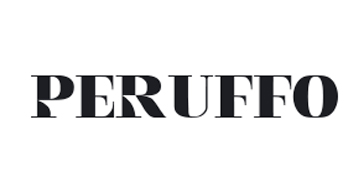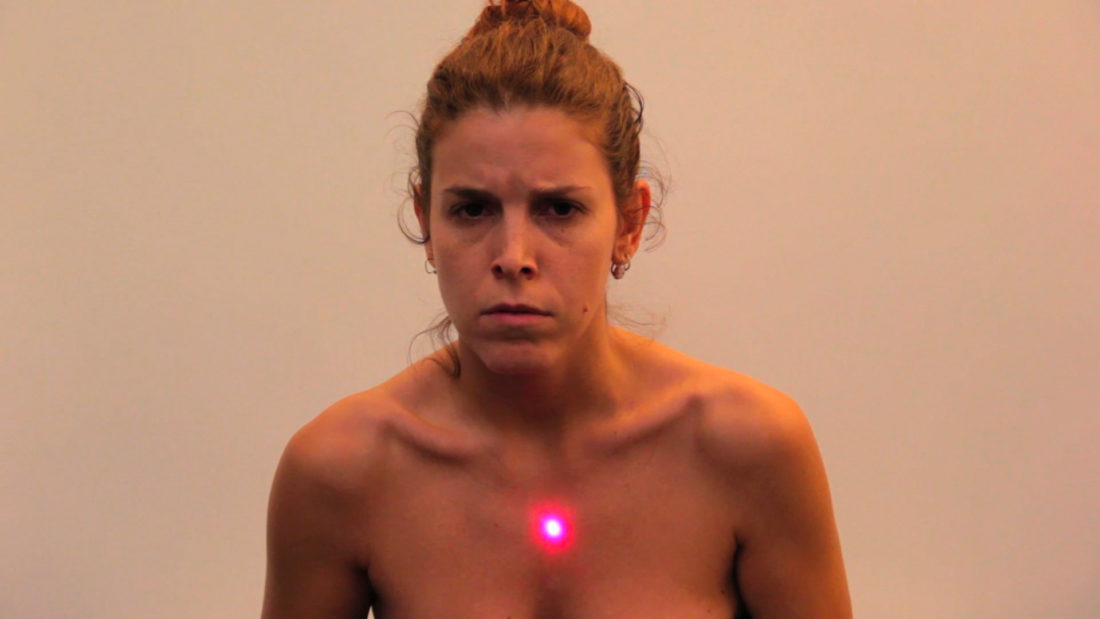MASCARILLA 19 – CODES OF DOMESTIC VIOLENCE
8 artists’ films at the time of the pandemic
Mascarilla 19 is a code word used in Spain by women experiencing domestic violence to report that they are victims of abuse.
Mascarilla 19 has inspired the title of a new project commissioned and produced by In Between Art Film, the production company founded by Beatrice Bulgari, curated by Leonardo Bigazzi, Alessandro Rabottini, and Paola Ugolini. Eight artists have been invited to address this “emergency within the emergency”: Iván Argote, Silvia Giambrone, Eva Giolo, Basir Mahmood, MASBEDO, Elena Mazzi, Adrian Paci, and Janis Rafa.
Mascarilla 19 – Codes of Domestic Violence is a new project by In Between Art Film, a production company founded by Beatrice Bulgari to explore and bend the boundaries between the visual arts, film, performance, and the languages of the moving image. Working with three curators—Leonardo Bigazzi, Alessandro Rabottini, and Paola Ugolini—and eight artists—Iván Argote (Colombia/France, 1983), Silvia Giambrone (Italy/UK, 1981), Eva Giolo (Belgium, 1991), Basir Mahmood (Pakistan/the Netherlands, 1985), MASBEDO (Italy, Nicolò Massazza, 1973 and Iacopo Bedogni, 1970), Elena Mazzi (Italy, 1984), Adrian Paci (Albania/Italy, 1969), Janis Rafa (Greece, 1984)—it will be producing eight films that deal with the extremely topical, dramatic subject of violence against women, and how it has been exacerbated by measures to contain the current pandemic.
In Between Art Film’s new project has a double motivation: on the one hand, it wants to call attention to the global emergency of gender violence, which has been rendered even more urgent by the confinement imposed on much of the world today; on the other, to encourage and support art-making at a time in history that is characterized by suspension and uncertainty.
For the first time, as a new phase of production work that ushers in a new commissioning approach, In Between Art Film is inviting a series of artists to respond creatively to an original concept developed in response to a pressing international phenomenon.
According to the World Health Organization, violence against women tends to increase in crisis situations like natural disasters, wars, or epidemics. Since the beginning of the Covid-19 pandemic, UN data shows that reports of domestic violence have tripled around the world, not even counting the many “invisible” cases where women have no way to ask for help.
Mascarilla 19 (Mask 19) is the name of a campaign launched by Spanish Prime Minister Pedro Sánchez in response to the appeal by UN Secretary-General António Guterres and to the frightening increase in requests for help during the first few weeks of the pandemic, when many women suffering abuse suddenly found themselves trapped at home. In a world that is digitally hyperconnected but physically isolated, the victims of domestic violence are in a state of double isolation, having no way to communicate with the outside world and seek assistance. So a secret “SOS” has been devised, a code word that victims of violence can use at pharmacies throughout Spain, alerting staff to set an emergency response process in motion.
In Between Art Film has chosen to allude directly to this campaign in the title of its new project, Mascarilla 19 – Codes of Domestic Violence, in which it will produce 8 single-channel videos commissioned from 8 international artists who will explore this delicate and pressing topic, each through their own sensibility.
By inviting artists from different generations and cultural backgrounds, Mascarilla 19 will delve into the many different human, social, and linguistic meanings of psychological isolation and physical violence, of a situation that makes communication impossible and turns the home from a place of shelter to a realm of abuse.
Moreover, Mascarilla 19 investigates how the production and distribution of moving images are changing in today’s context, given the current limitations on expression as well as movement.
“By exploring artists’ visions through their work, I want to open up a space for thinking about the concepts of freedom and limitation, about silence as violence, and about the responsibility—which I myself feel—to respond to this cultural emergency, in part by supporting artists” (Beatrice Bulgari)
The production of these new works, which has already begun at the conceptual level, will be carried out as soon as pandemic containment measures are sufficiently loosened in the artists’ countries of residence.
The complete cycle of Mascarilla 19 – Codes of Domestic Violence will be premiered by In Between Art Film in the autumn of 2020 through a network of institutional partnerships in Italy and abroad, showing the deeply collaborative nature of this project even at the level of distribution.
In Between Art Film is a production company founded in 2012 by Beatrice Bulgari, specialized in producing independent films and artist documentaries that take an interdisciplinary approach, interweaving the different artistic languages of our time. In Between Art Film’s main mission is to explore the fertile, shifting boundaries between the arts, to give artists and filmmakers full freedom of expression. For some time now, many artists have been challenging the traditional divisions between disciplines—influencing each other’s work, refusing to be pigeonholed, and creating a middle ground where film, video installation, literature, photography, and performance can all come together.
In eight years of work, In Between Art Film has forged major institutional and cultural partnerships in contexts such as: vice versa, Italian Pavilion, 55th International Art Exhibition – La Biennale di Venezia (Venice, 2013); Biennale de l’Image en Mouvement (Centre d’Art Contemporain Genève, 2016 – 2018); miart (Milan, 2016 – 2020); Tate Film (London, 2017 – 2019); Maxxi Videogallery (Rome, 2017 – 2019); Il Mondo Magico, Italian Pavilion, 57th International Art Exhibition – La Biennale di Venezia (Venice, 2017); Documenta 14 (Athens – Kassel, 2017), Lo Schermo dell’Arte (Florence, 2017 – 2019) Dhaka Art Summit (Dhaka, 2018); Manifesta 12 (Palermo, 2018); Videocittà (Rome, 2018); Loop Barcelona (2018 – 2019); Serpentine Galleries (2019), Neither Nor: The Challenge to the Labyrinth, Italian Pavilion, 58th International Art Exhibition – La Biennale di Venezia (Venice, 2019).
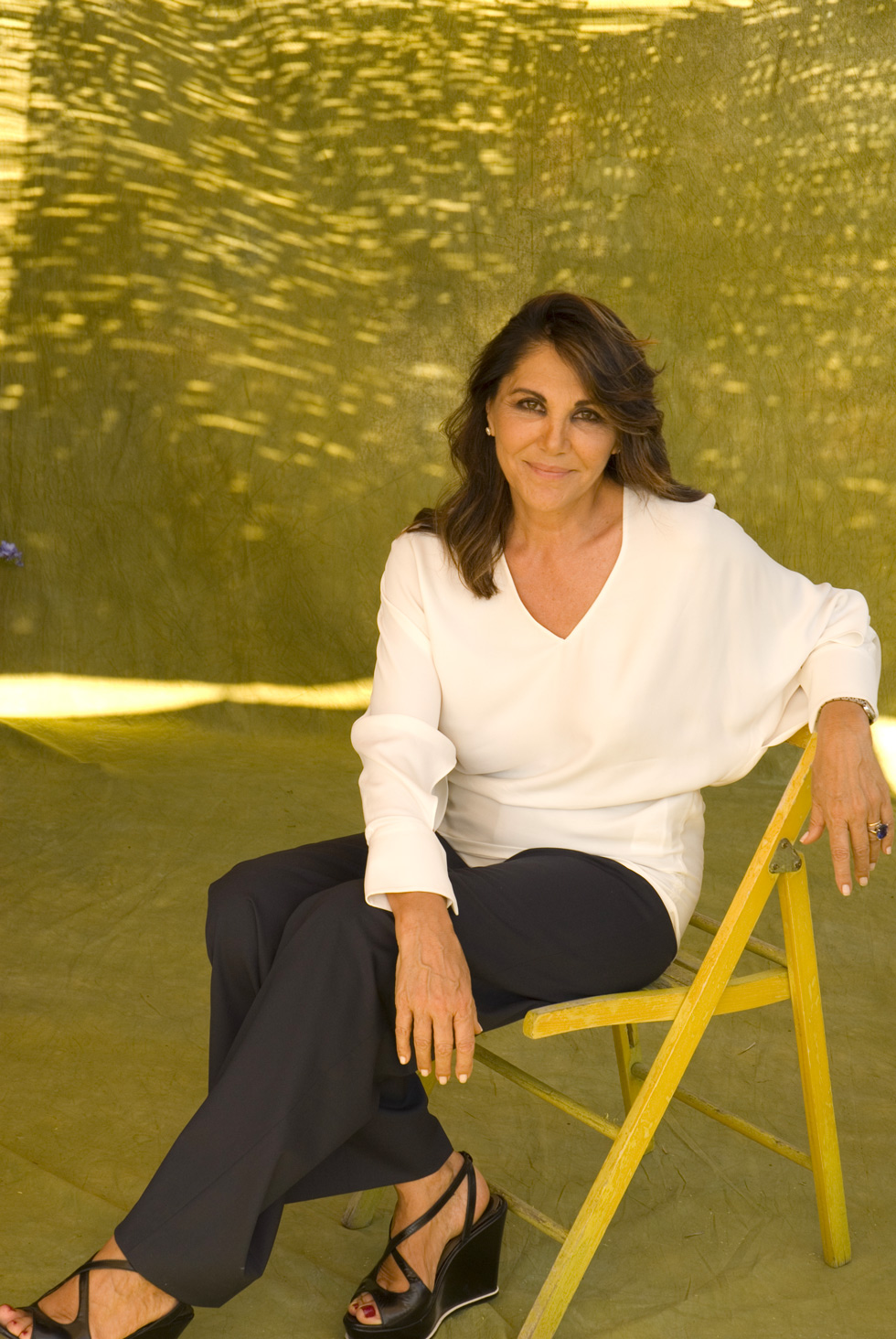
Beatrice Bulgari – Ph Elisabetta Catalano
Beatrice Bulgari lives and works between Rome and New York. She has collaborated as set and costume designer in many films such as Cinema Paradiso directed by Giuseppe Tornatore.
In 2007 she sets up CortoArteCircuito a multifaceted platform that has produced documentaries filmed by international directors on the work of contemporary artists: Michelangelo Pistoletto, Antony Gormley, Marco Tirelli, Alfredo Pirri, Luigi Ontani among many others.
In 2012 she launches In Between Art Film, a film production company, dedicated to providing artists, filmmakers, and directors with the possibility of freely exploring a creative interdisciplinary approach between two languages: the language of cinema and the language of contemporary art.
Over these years, Beatrice Bulgari has produced several feature-length films and artist films such as Yervant Gianikian, Masbedo, Diego Marcon, William Kentridge, Vanessa Beecroft, Pierre Bismuth, Pamuk and Shirin Neshat.
Press office
Lara Facco P&C
Viale Papiniano 42 – 20123 Milano
press@larafacco.com
www.larafacco.com
BIOGRAFIE ARTISTI
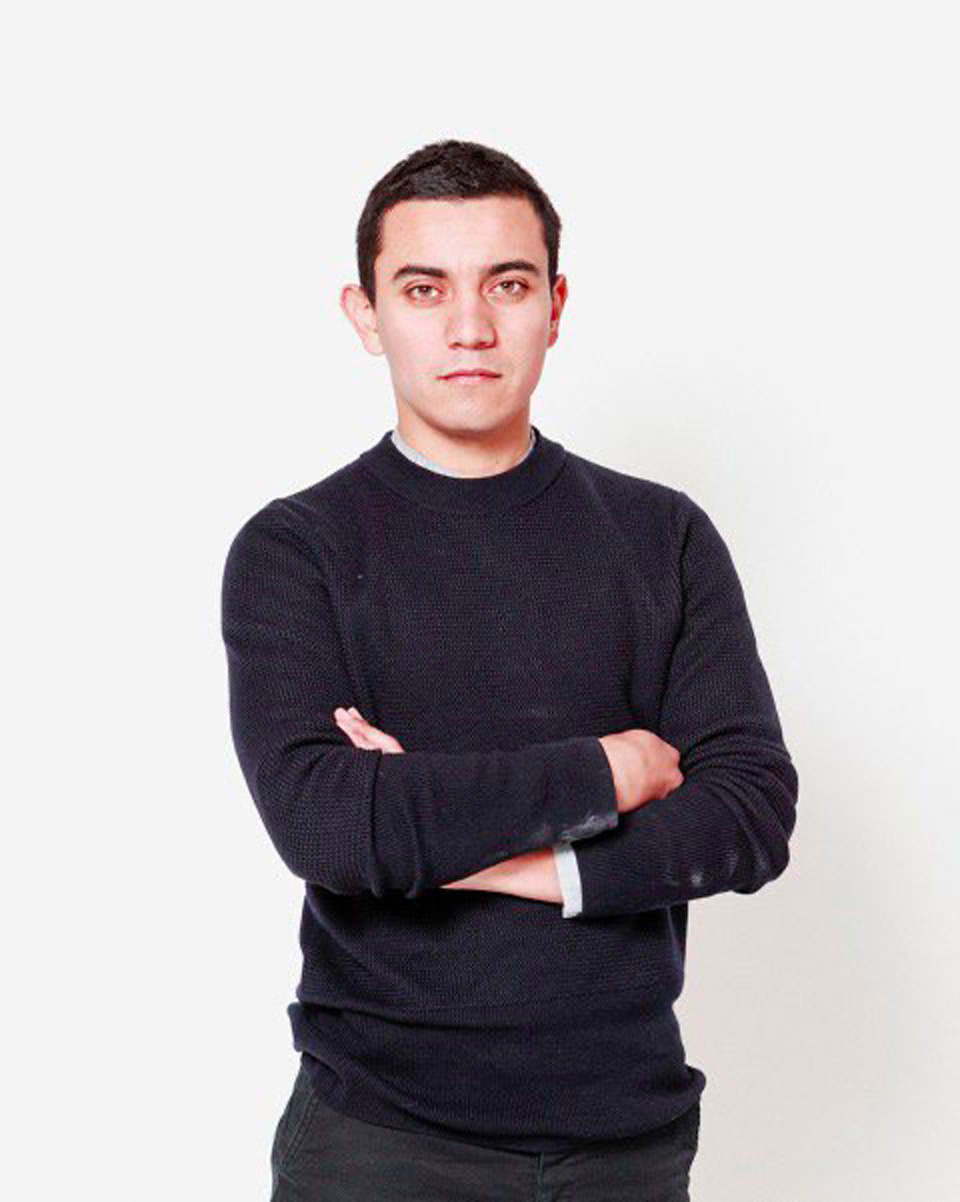
Ivan Argote – Ph. Claire Dorn
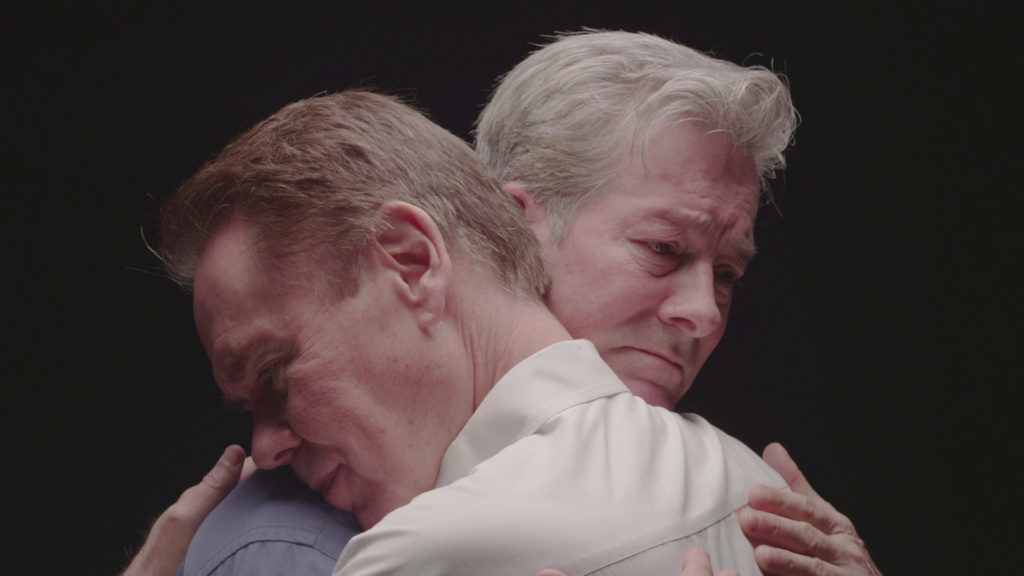
Iván Argota. Two fifty years old white males having emotions, 2013 – Video, 25:23 – courtesy the artist
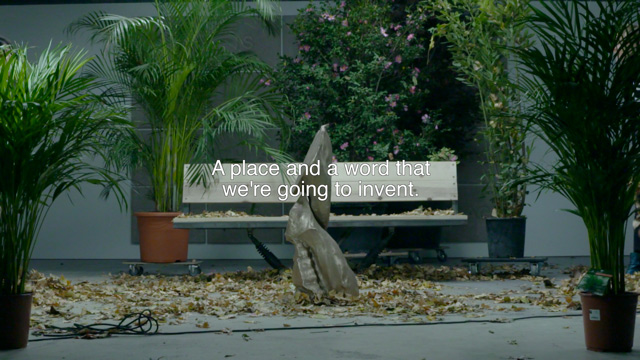
Ivan Argote – La Plaza del Chafleo_2018 – Iván Argote – La Plaza del Chafleo, 2018-2019 – Video, 15:15 – courtesy the artist
Iván Argote (b. 1983 in Bogotá, lives in Paris)
The works of Iván Argote explore the relationship between history, politics, and the construction of our own subjectivities. His films, sculptures, collages, and public space installations attempt to generate questions about how we relate to others, to the state, to heritage and tradition. His works are sometimes anti-establishment critiques; taking a tone that is compelling yet tender, they investigate the idea of bringing emotions to politics and politics to the emotions.
Iván Argote’s solo exhibitions include: Juntos Together, ASU – Arizona State University Art Museum (Tempe, AZ, 2019); Radical Tenderness, MALBA (Buenos Aires, 2018); Deep Affection, Perrotin (Paris, 2018); Somos Tiernos, Museo Universitario del Chopo (Mexico City, 2017); Somos, Galeria Vermelho (São Paulo, 2017); La Venganza del Amor, Perrotin (New York, 2017); Sírvete de mi, sírveme de ti, Proyecto Amil (Lima, 2016); Strengthlessness, Standard High Line (New York, 2016); An Idea of Progress, SPACE (London, 2016); Cómo lavar la losa coherentemente, NC Arte (Bogotá, 2016); La puesta en marcha de un sistema, Galeria ADN (Barcelona, 2015); Reddish Blue, DT Project (Brussels, 2015); Let’s Write a History of Hopes, Galeria Vermelho (São Paulo, 2014); Strengthlessness, Galerie Perrotin (Paris, 2014); La Estrategia, Palais de Tokyo (Paris, 2013); and Sin heroísmos, por favor, CA2M (Madrid, 2012), among others.
He has also participated in several numerous group exhibitions, biennials and film festivals such as: Desert X, (Coachella Valley, CA, 2019); Poéticas de la emoción, Caixa Forum (Barcelona, 2019); The Street: Where the World Is Made, MAXXI (Rome, 2018); How to See [What Isn’t There], Burger Collection Hong Kong at the Langen Foundation (Neuss, 2018); Wonderland, The High Line (New York, 2018); Regreso al futuro, Casa Encendida (Madrid, 2018); Hybrid Topographies, Deutsche Bank Collection (New York, 2018); Bienal Sur (Buenos Aires – Bogotá, 2017); Continua Sphères Ensemble, Le Centquatre-Paris (Paris, 2017); Du Verbe à La Communication, Carré d’Art (Nîmes, 2017); A Decolonial Atlas, Vincent Price Art Museum (Monterey Park, CA, 2017); Monumentos, anti- monumentos y nueva escultura pública, Museo de Arte de Zapopan (Zapopan, 2017); Future Generation Art Prize, PinchukArtCentre (Kiev – Venice, 2017); Bread and Roses, Museum of Modern Art (Warsaw, 2016); Festival Hors Pistes, Centre Pompidou (Paris – Malaga, 2016); Ideologue, Utah Museum of Contemporary Art (Salt Lake City, UT, 2016); Dear Betty: Run Fast, Bite Hard!, GaMEC (Bergamo, 2016); Intersections, Cisneros Fountanals Foundation (Miami, 2015); 5th Thessaloniki Biennale (Thessaloniki, 2015); Levitate, Museums Quartier (Vienna, 2015); L’éloge de l’heure, MUDAC (Lausanne, 2015); Buildering: Misbehaving the City, Blaffer Art Museum & CAC Contemporary Arts Center (Houston – Cincinnati, 2014); Colonia Apocrifa, MUSAC (Léon, 2014); The Part In The Story…, Witte de With (Rotterdam, 2014); Utopian Days – Freedom, Total Museum of Contemporary Art (Seoul, 2014); All about these…, National Gallery of Arts (Tirana, 2014); Festival Hors Pistes, Centre Pompidou (Paris, 2014); Los irrespetuosos, Museo Carrilo Gil (Mexico City, 2013); 30th São Paulo Biennial (São Paulo, 2013); and Girarse, Joan Miró Fundation (Barcelona, 2012), among others.
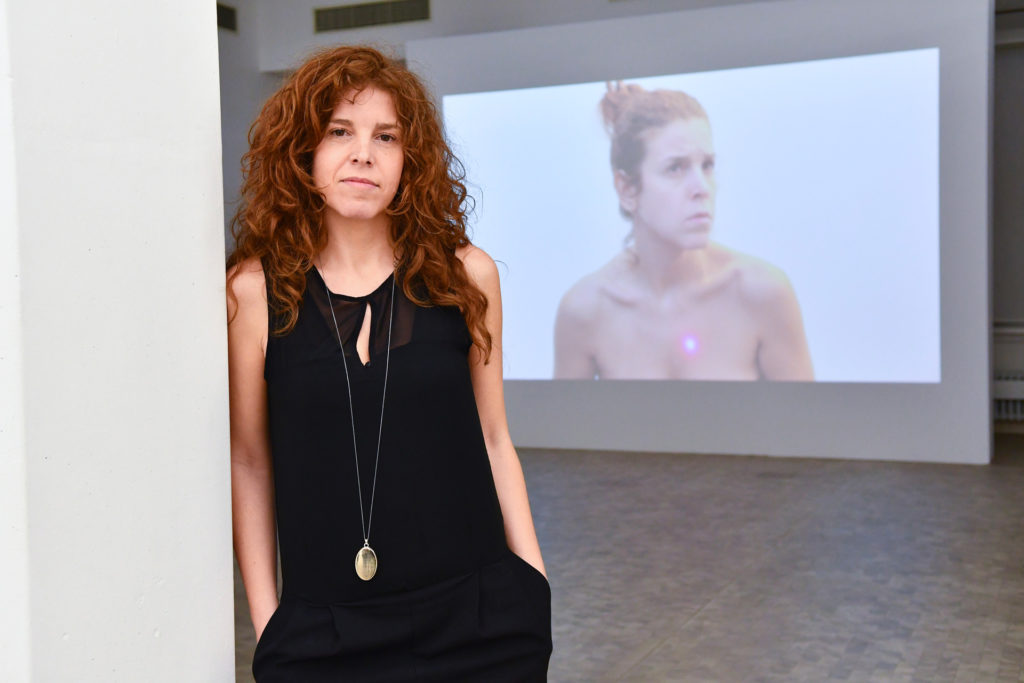
Silvia Giambrone – portrait in Kiel- Ph. Marco Ehrhardt – Stadtgalerie Kiel – Courtesy Vaf Stiftung
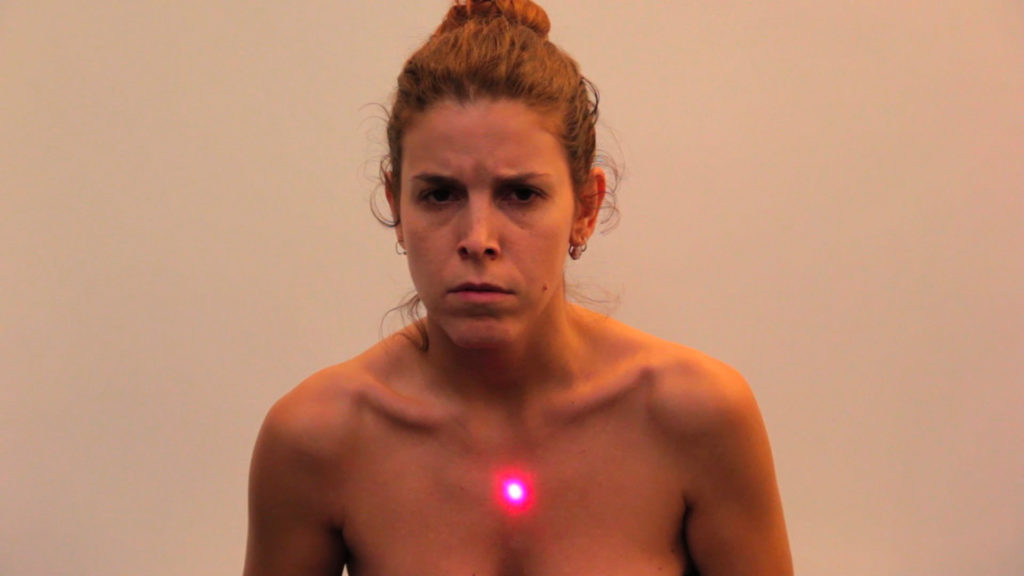
Silvia Giambrone – Sotto tiro, 2013 – courtesy the artist
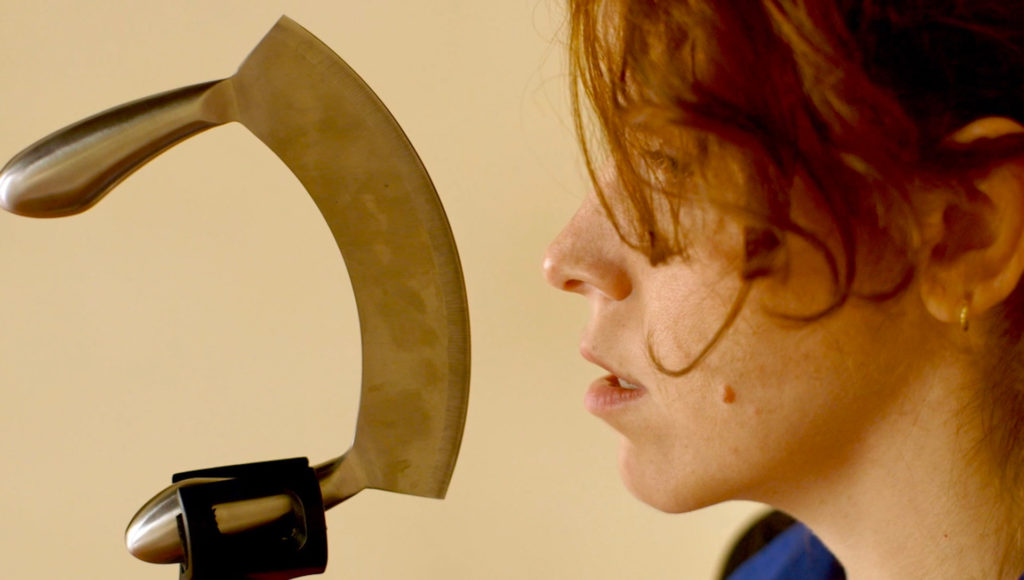
Silvia Giambrone – Nobody’s room, 2015 – courtesy the artist
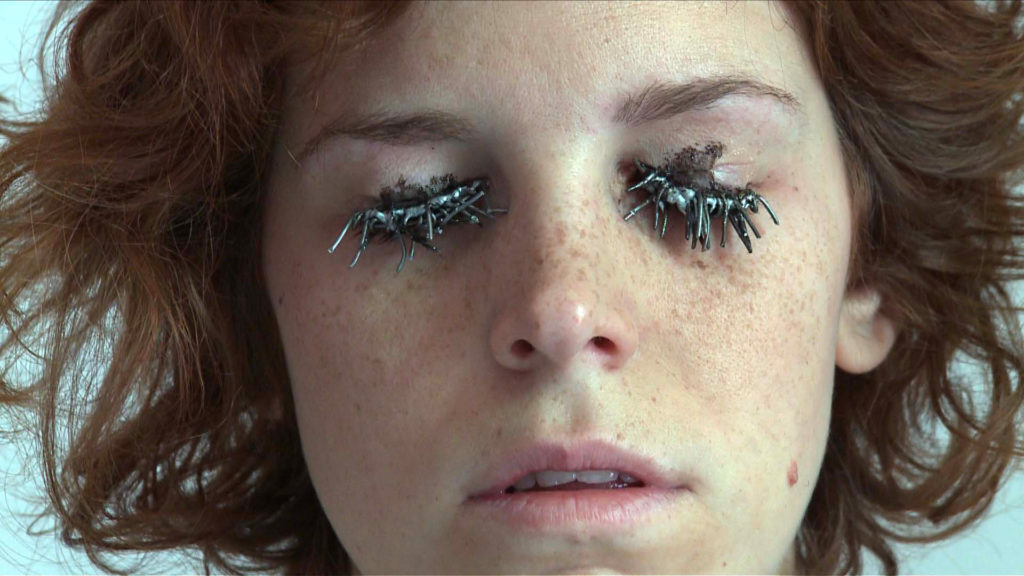
Silvia Giambrone – Eredità, 2008 – courtesy the artist and Richard Saltoun Gallery
Silvia Giambrone was born in 1981.
She studied at the Academy of Fine Arts in Rome (2002- 2006). She has held residencies throughout Europe and USA and been awarded several prizes over the past five years. She has recently been awarded the VAF prize, the most important prize for young Italian artists. Giambrone, who both lives and works between Rome and London, works about both the physical and invisible evidences of the strong connection between violence ad the ‘subjectification’ process.
Some of her exhibitions include: Pandora’s Boxes, CCCB Museum, Madrid (2009); Eurasia, Mart Museum, Rovereto (2009); Moscow Biennale: Qui vive? (2010); Flyers, Oncena Biennal de la Havana (2012); Re-Generation, Macro Museum, Rome (2012); Mediterranea 16 (2013); Let it go, American Academy in Rome (2013); Critica in arte, MAR Museum, Ravenna (2014); Ciò che non siamo, ciò che non vogliamo, MAG Museum, Riva del Garda (2014); A terrible love of war, Kaunas Bienale, Lituania (2015); ‘Suite Rivolta’, Museu de Electricidade, Doclisboa’s Passages, Lisboa (2015); Every passion borders on the chaotic, Villa Croce Museum, Genoa (2016); W Women in Italian Design, Triennale Design Museum, Milan (2016); Archeologia domestica Vol. I, IIC, Köln (2016); Time is out of Joint, La Galleria Nazionale, Rome (2017); Corpo a corpo, La Galleria Nazionale, Rome (2017); Terra mediterranea: in action, NiMAC, Nicosia, Cyprus (2017); Il corpo è un indumento fragile, Museo del 900, Florence (2018); Young Italians 1968 – 2018, Italian Institute of Culture, New York City (2018); SHE DEVIL Remix, Pecci Museum, Prato (2018); Vaf Prize, Museo d’Arte Moderna e Contemporanea di Trento e Rovereto, Vaf Foundation (2019); Wall-eyes. Looking at Italy and Africa, Keynes Art Mile, Johannesburg (2019); Wall-eyes. Looking at Italy and Africa, Cape Town (2019); Donne. Corpo e immagine tra simbolo e rivoluzione, Galleria d’Arte Moderna, Rome (2019); La Correzione, Galleria Marcolini, Forlì (FC) (2019); VII Premio Fondazione VAF, Stadtgalerie Kiel, Germany (2019); Italia. I racconti (in)visibli, Gyumri, Armenia, Styles Regional Gallery (2019); Italia. I racconti (in)visibli, Santiago del Cile, Museo Cultural Las condes, Cile (2019); Feminism in Italian contemporary art, Richard Saltoun Gallery, London (2019); Sovvertimenti, Museo Novecento, Firenze (2019); Io dico io, La Galleria Nazionale, Roma (2020); Level 0, Museo del Novecento, Milano (2020).
She works with Richard Saltoun Gallery in London, Stefania Miscetti Studio in Rome and with Galleria Marcolini in Forlì.
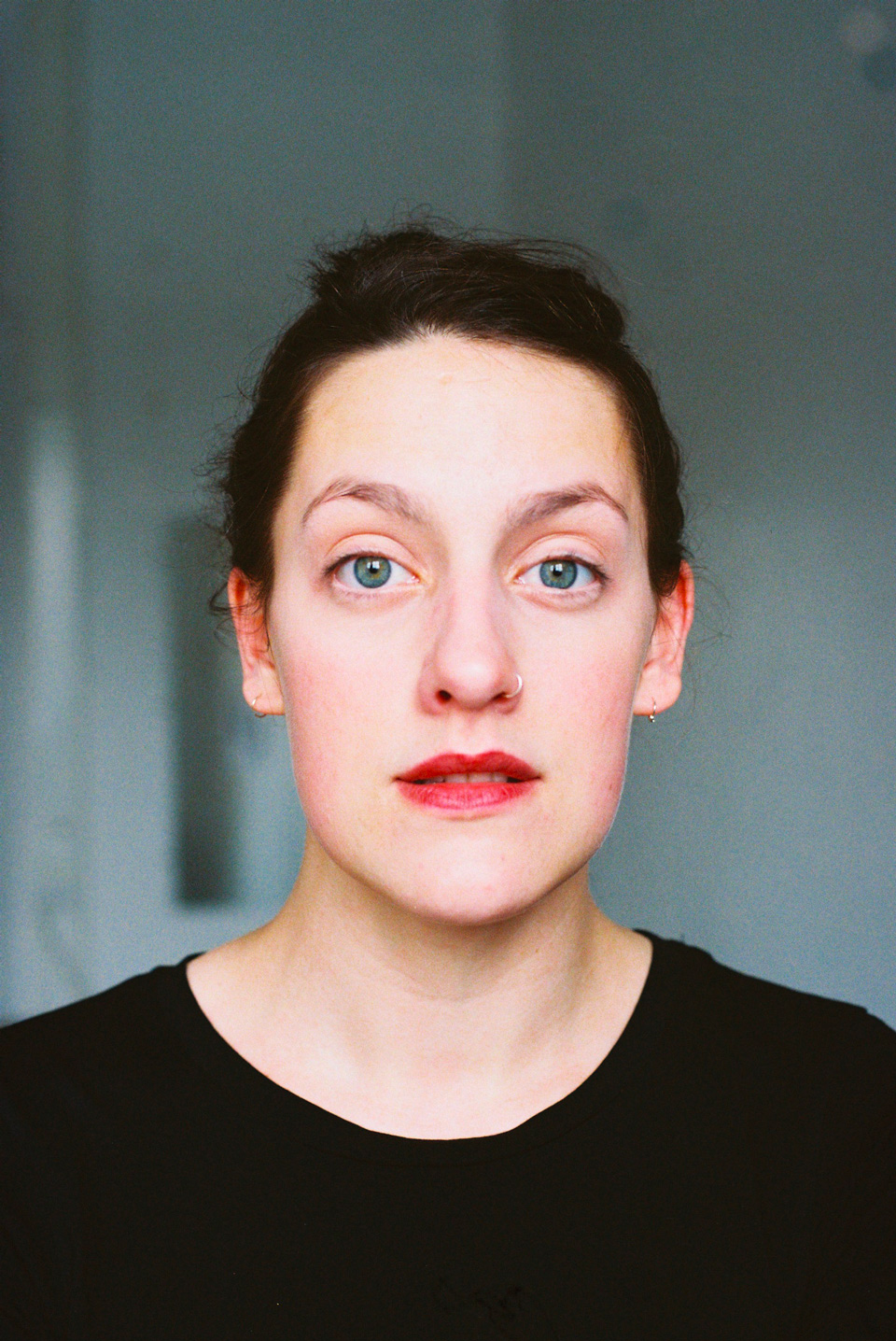
Eva Giolo – Ph. Anais Chabreur
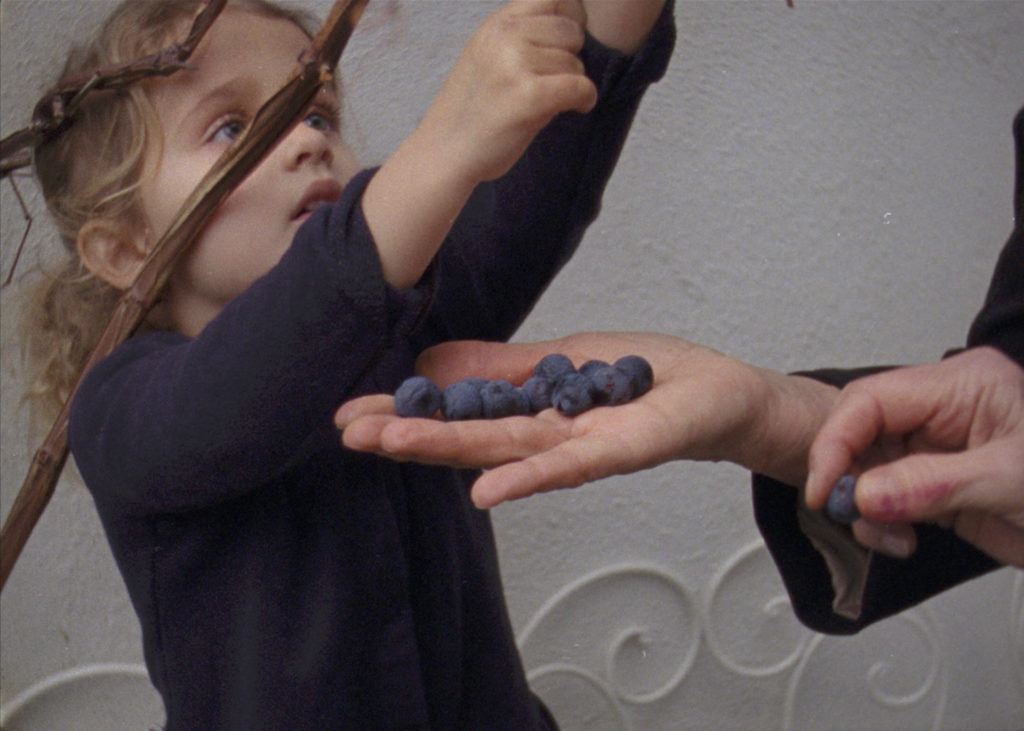
Eva Giolo- A Tongue Called Mother, 2019 – courtesy the artist
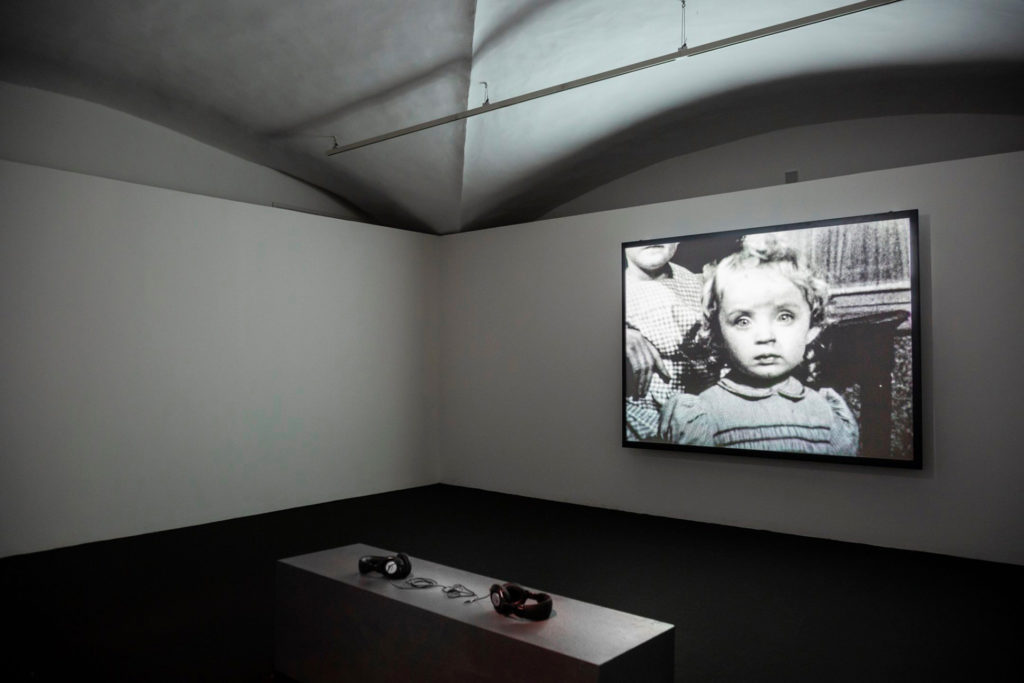
Eva Giolo – Gil, 2016 – courtesy the artist – ph. Gianmarco Rescigno
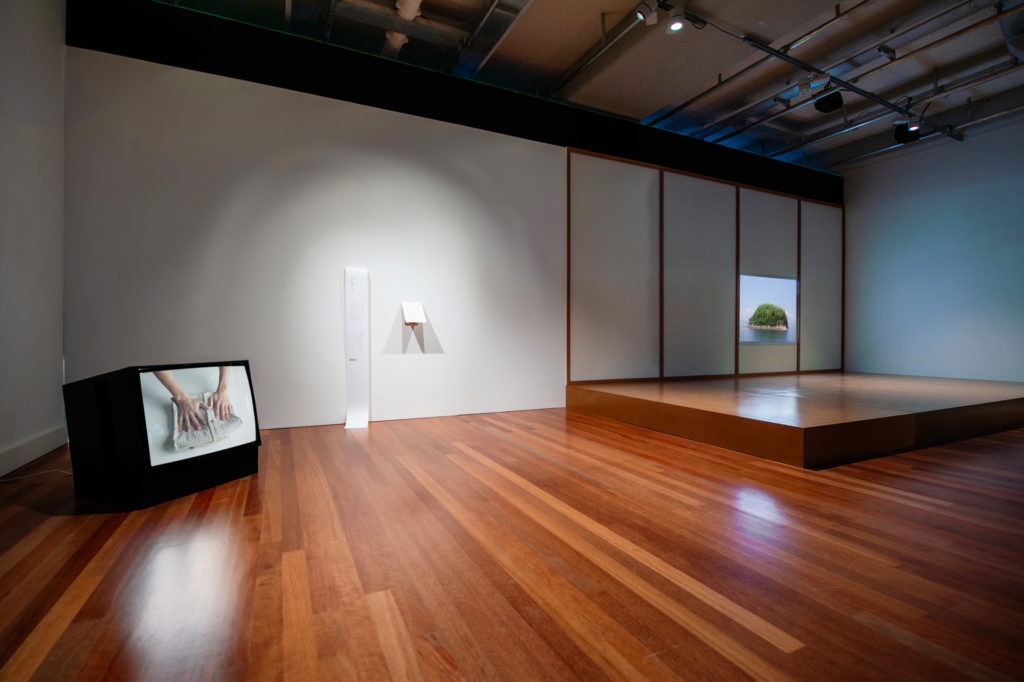
Eva Giolo – The Taste of Tangerines and study of gestures, 2019 – courtesy the artist, LNDW studio
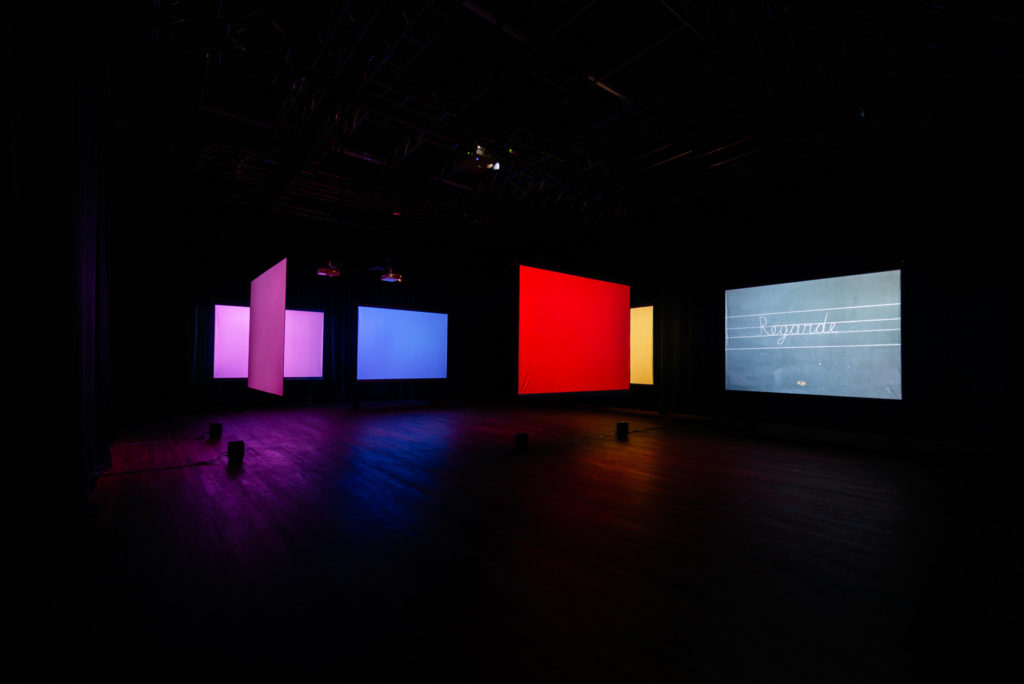
Eva Giolo – A Tongue Called Mother, 2019 – ourtesy the artist, LNDW studio
Eva Giolo (b. 1991, Brussels)
Eva Giolo is an audio-visual artist. Her work in film shows a propensity to capture family stories—her own, or other people’s. Using documentary strategies, she paints portraits that open a window into unseen, usually private, inner worlds. Giolo obtained her MFA in Fine Arts at the Royal Academy of Arts (KASK), Ghent and her BFA from the Media Arts Department at KASK and Kanazawa College of Art in Japan. She completed her music education at the Institute of Contemporary Music in London.
Recent screenings and exhibitions include: Vordemberge-Gildewart Award, GEM (The Hague, 2020); Folding Figures, Brakke Grond (Amsterdam, 2019); VISIO: Moving Images After Post-Internet, Palazzo Strozzi (Florence, 2019); Arthaus Artist Residency, Arthaus Movie Theater (Havana, 2019); Cedric Willemen Award, Nona (Mechelen, 2019); Expanded Trails, FIDMarseille (Marseille, 2019); Failures of Cohabitation, M HKA (Antwerp, 2019); Antarctica: An Exhibition about Alienation, Kunsthalle Wien (Vienna, 2018); Rencontres Internationales Paris/Berlin, Haus der Kulturen der Welt (Berlin, 2018); Homeless Movies, Visite Film Festival, Het Bos (Antwerp, 2018); Memory Error, Imagine Science Film Festival (New York, 2017); On the Look Out, TAZ#17 (Ostend, 2017); Art Vidéo #2, Côté Court (Paris (2017); Deep Focus, International Film Festival Rotterdam (Rotterdam, 2017); Unfold II, Blaa Galleri (Copenhagen, 2016); Homeless Movies, Huis Van Alijn (Ghent, 2016); Hommage, BOZAR (Brussels, 2016); Notes on Cinema, Courtisane Film Festival (Ghent, 2016/2019); Mu, Ishibiki Gallery (Kanazawa, 2014); II część, In Out Film Festival (Gdansk, 2014).
Giolo is a winner of the VAF Wildcard for experimental film (2016) and the Cedric Willemen Award (2019). She has been nominated for the VG Award (2020). She is a former post-grad art resident at HISK (2018-2020), and will be a WIELS resident in the summer of 2020. She is a founding member of elephy.
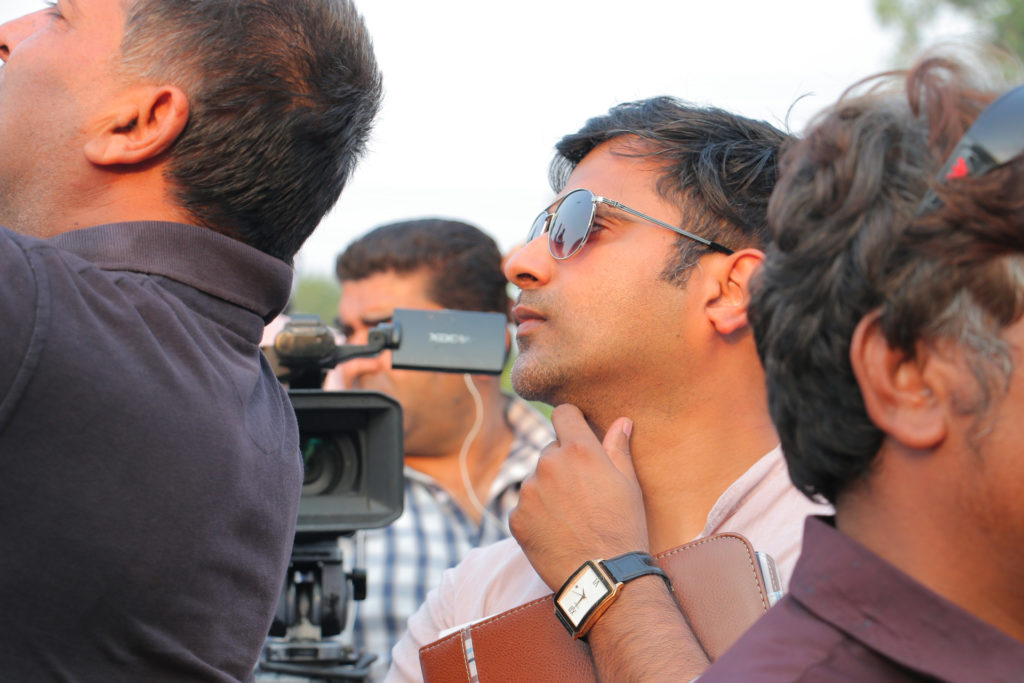
Basir Mahmood – Ph. Muhammad Ahsan
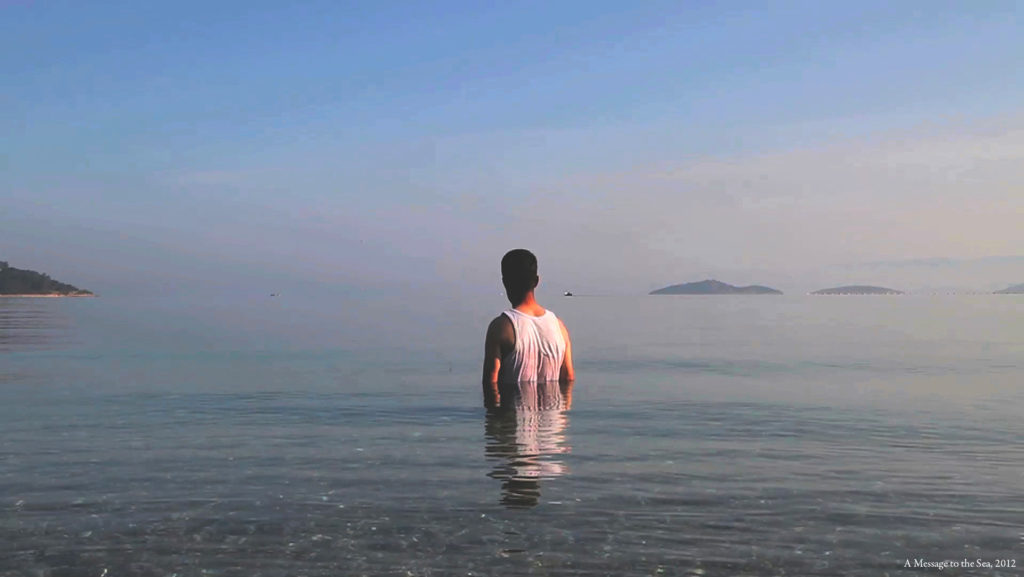
Basir Mahmood – A message to the sea, 2012 – courtesy the artist
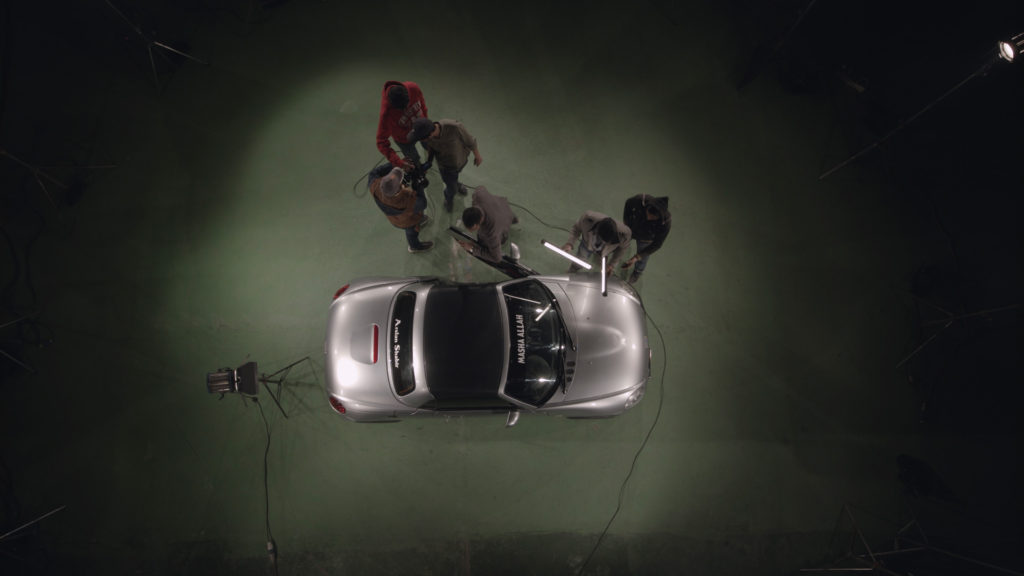
Basir Mahmood – moon sighting, 2019 – courtesy the artist
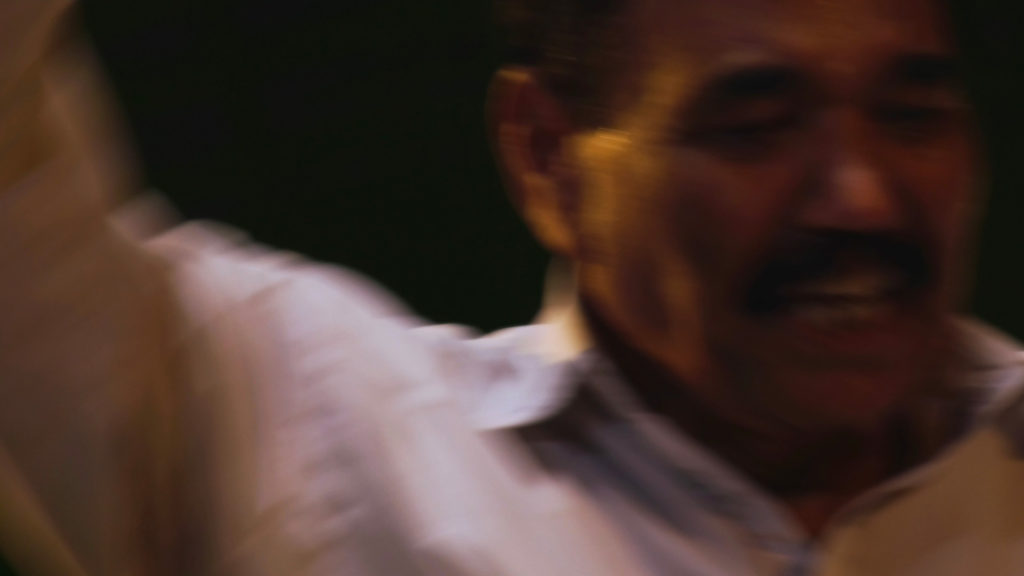
Basir Mahmood – Death, at least once, 2020 – courtesy the artist
Basir Mahmood (b. 1985, Lahore, Pakistan)
Basir Mahmood studied in Lahore at the Beaconhouse National University. Soon after, he received a year-long fellowship from Akademie Schloss Solitude in Stuttgart, Germany, for 2011. He was also later awarded a two-year research fellowship by the Rijksakademie van beeldende kunsten, Amsterdam, for 2016 and 2017.
Mahmood engages with the situations around him by reflecting upon embedded social and historical terrains of the ordinary, as well as his personal milieu. Using video, film or photograph, Mahmood weaves various threads of thought, discovery, and insight into poetic sequences and various forms of narrative.
Since 2011, his works have been widely shown in contexts that include: The Garden of Eden, Palais de Tokyo (Paris, 2012); III Moscow International Biennale for Young Art (Moscow, 2012); The Broad Museum: Inaugural Exhibition, Michigan State University (East Lansing, MI, 2012); Asia Pacific Time of Others, Museum of Contemporary Art Tokyo (Tokyo, 2015); Yinchuan Biennial (Yichuan, 2016); Abraaj Group Art Prize Show (Dubai, 2016); Contour Biennale 8 (Mechelen, 2017); Tableaux Vivants, Foundation Etrillard (Paris, 2017); 10th Berlin Biennale for Contemporary Art (Berlin, 2018); Freedom of Movement, Stedelijk Museum (Amsterdam, 2018); and Innsbruck International (Innsbruck, 2020).
Mahmood has received accolades from around the world for his work. Most recently he was shortlisted for Portugal’s prestigious, highly competitive Paulo Cunha e Silva Art Prize; an exhibition with works by the six finalists will be held at Galeria Municipal do Porto in June 2020.
Works by Mahmood are in various private collections and have also been acquired by the Queensland Art Gallery in Brisbane; the Stedelijk Museum in Amsterdam, and the Centre National des Arts Plastiques in Paris.
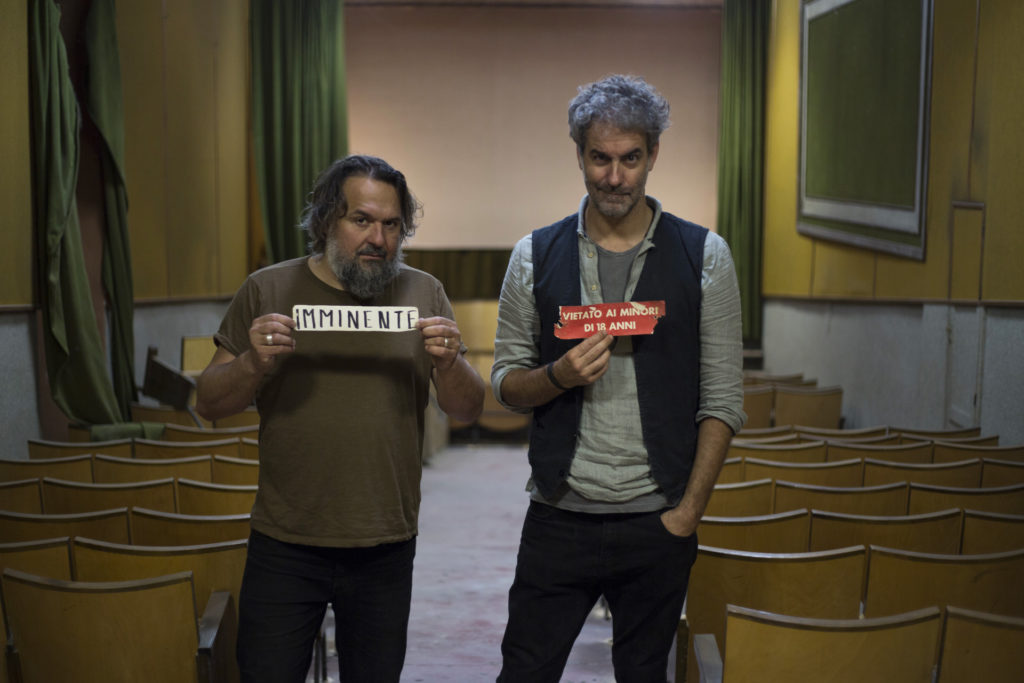
MASBEDO
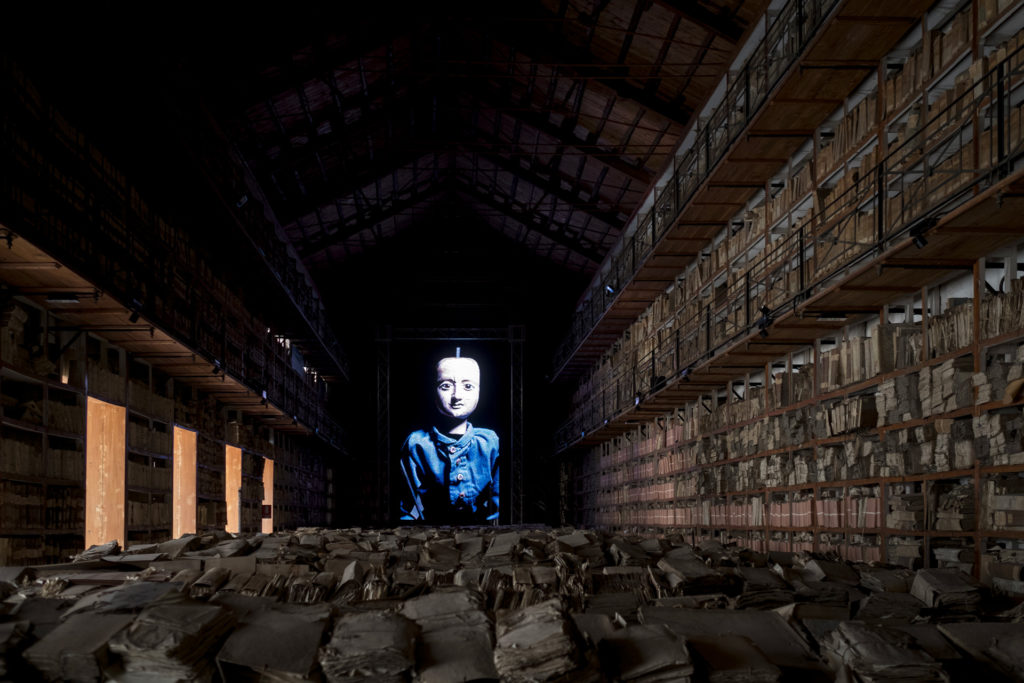
MASBEDO – Blind Mirrors, 2019 – Still da video – Monochannel video 4k transferred on H264 1920×1080- Duration 8’ 35’’, loop, stereo sound – Courtesy In Between Art Film
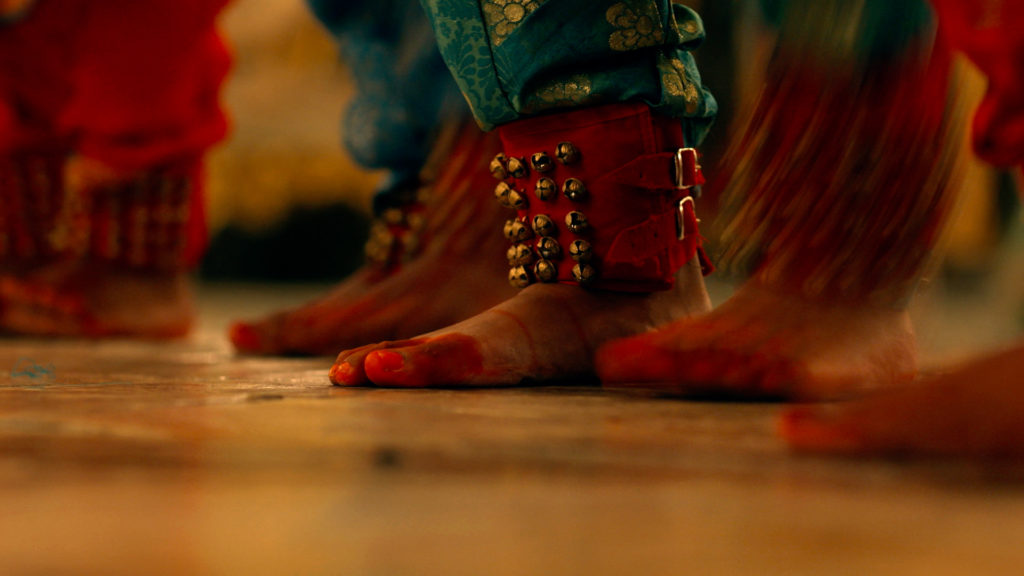
MASBEDO – Protocol no. 90/6, 2018 – Site-specific video installation with sound – Sala delle Capriate – Archivio di Stato di Palermo – Commissioned by Manifesta12 – Produced by Beatrice Bulgari for In Between Art Film
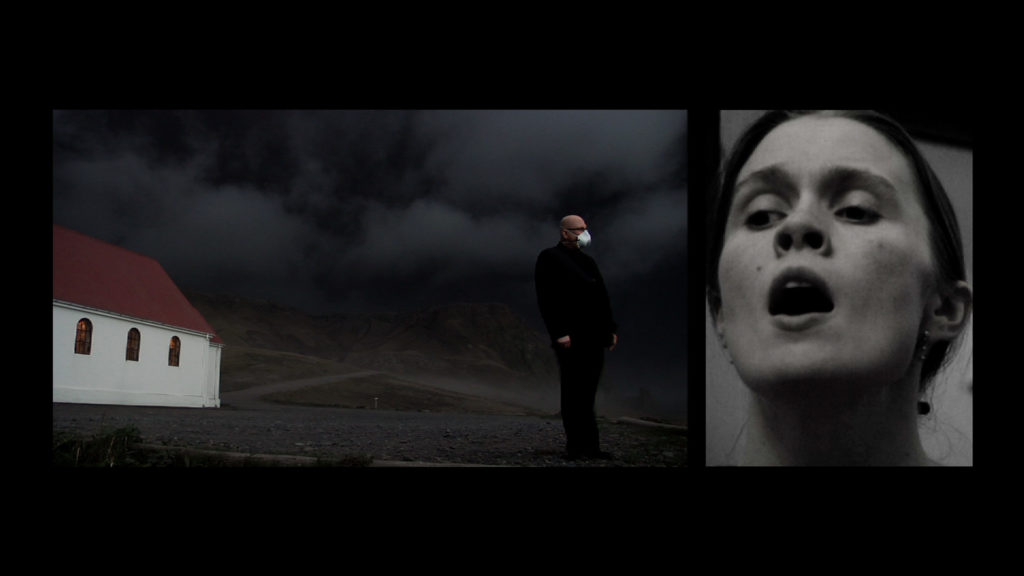
MASBEDO – Ash, 2010 – two screens rear projection – format 16:9 and 4:3 – length 8’ 50’’ – edition 5 and 2 AP – courtesy Masbedo
MASBEDO are Nicolò Massazza (1973) and Iacopo Bedogni (1970).
They live in Milan and work together since 1999, focusing on video art and installations. They express themselves through the language of video, in different forms such as performance, theater, installation, photography and recently cinema. In Italy they are recognized among the most important video artists and innovators in the field of contemporary art, thanks to their unique feature of re-union of different arts and the multiplicity of languages in a single chorus.
Their works have been exhibited in museums, biennials and institutions around the world, including: 2019 – ICA Milan Institute for Contemporary Art, Palazzo Dugnani Milan; 2018 – MAMM Multimedia Art Museum Moscow, Manifesta12 Palermo, Kunstlaboratorium Vestfossen Oslo, Centre Pompidou/Forum des Immages Paris, Haus der Kulturen der Welt Berlin; 2017 – Marta Herford; 2016 – Reggia di Venaria Reale Torino, Museum of Contemporary Art Zagreb, Nomas Foundation Roma, Blickle Foundation Stuttgart; 2015 – MART Rovereto, Changjiang Museum of Contemporary Art, Art Basel Film Hong Kong Arts Centre; 2014 – Fondazione Merz; 2013 – Leopold Museum Vienna, MAMBA Museo de Arte Moderno de Buenos Aires; 2012 – Castello di Rivoli Museo d’Arte Contemporanea Torino; 2011 – Art Unlimited Basel, MAXXI Roma, OK Offenes Kulturhaus Linz, EMAF European Media Art Festival Osnabrück; 2010 – Center for Contemporary Art Ujazdowsky Castle Warsaw, CAAM Centro Atlántico de Arte Moderno Las Palmas, Kaohsiung Museum of Fine Arts Taiwan; 2009 – Museo Nacional Centro de Arte Reina Sofía Madrid, 53. Esposizione Internazionale d’Arte la Biennale di Venezia; 2007 – Centro per l’Arte Contemporanea Luigi Pecci Prato, Tel Aviv Museum of Art; 2006 – CCCB Centre de Cultura Contemporània de Barcelona, DA2 Domus Artium 02 Salamanca, Hangar Bicocca Milano.
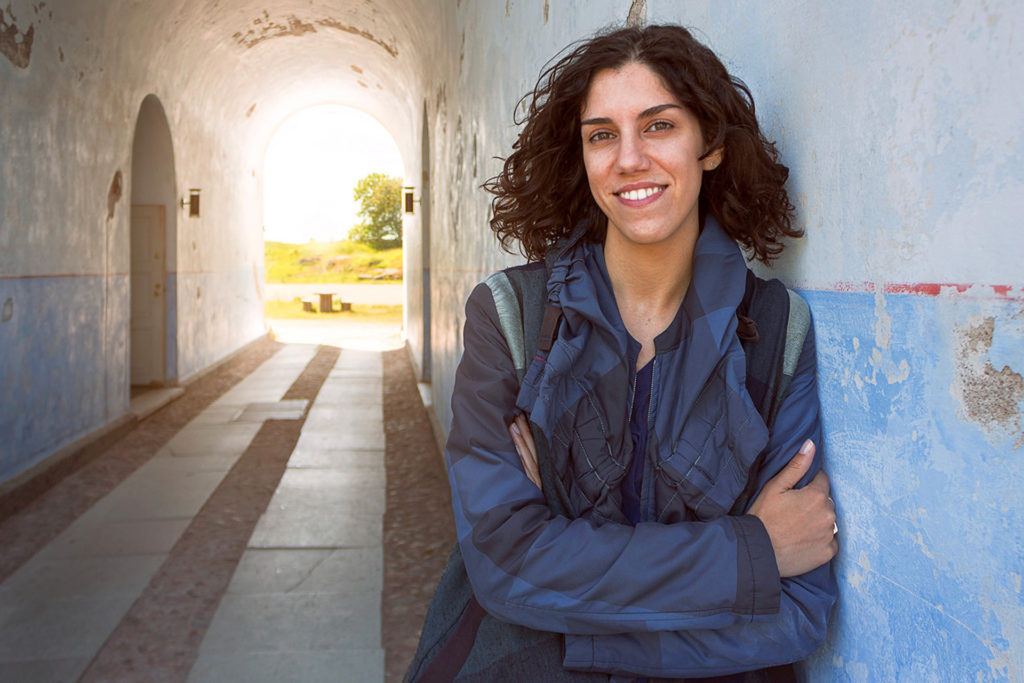
Elena Mazzi – Ph. Sergio Urbina
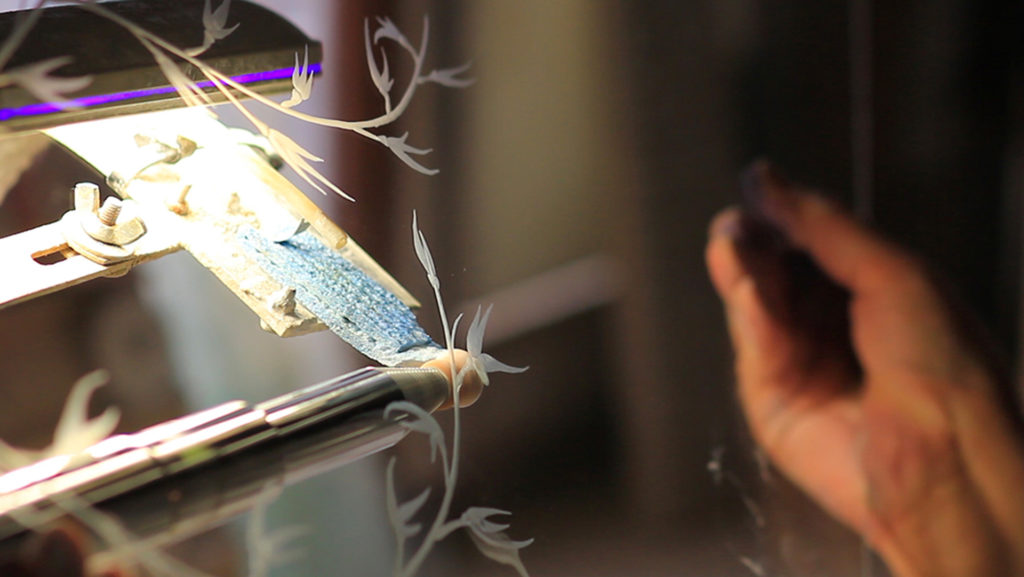
Elena Mazzi – Lacuna_Land of hidden spaces, suono, 2014 – colore, 12’16’’ – courtesy l’artista e galleria Ex Elettrofonica
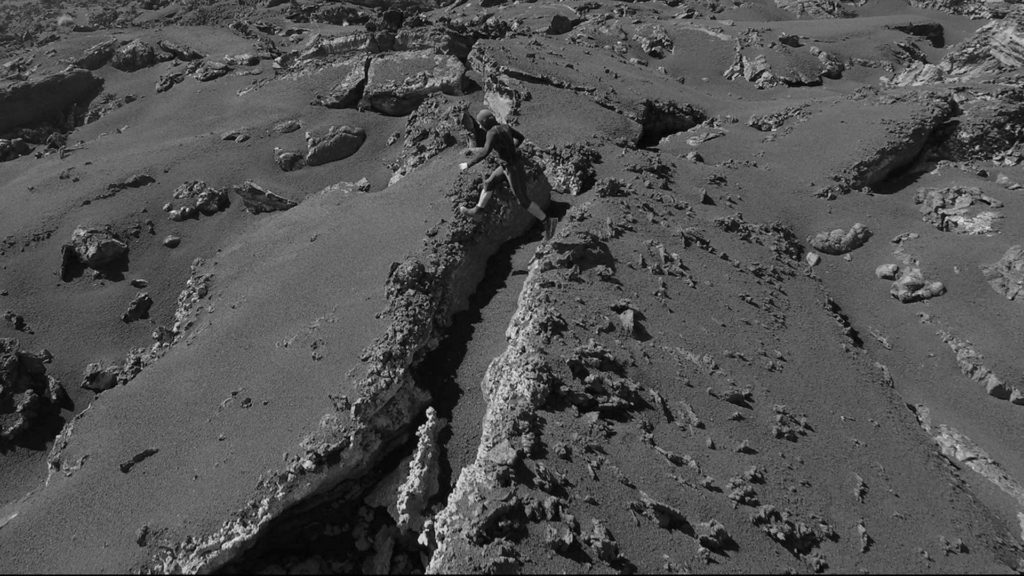
Elena Mazzi – Sara Tirelli – A Fragmented World, 2016 – suono, b/w, 5’9’’ – courtesy le artiste e galleria Ex Elettrofonica
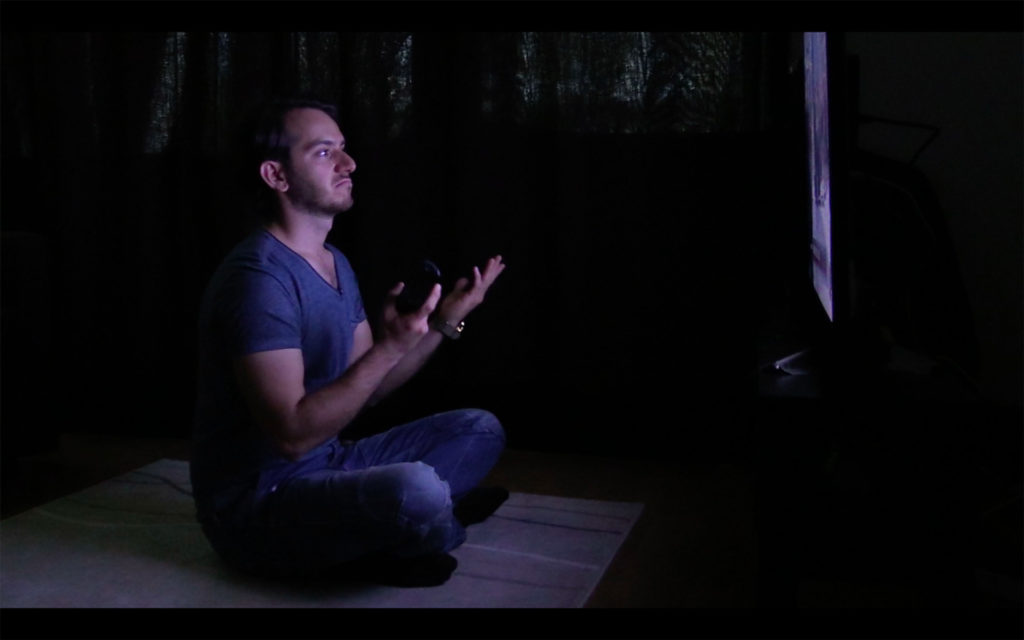
Elena Mazzi – I am talking to you, 2016 – suono, colore, 11’ – courtesy l’artista
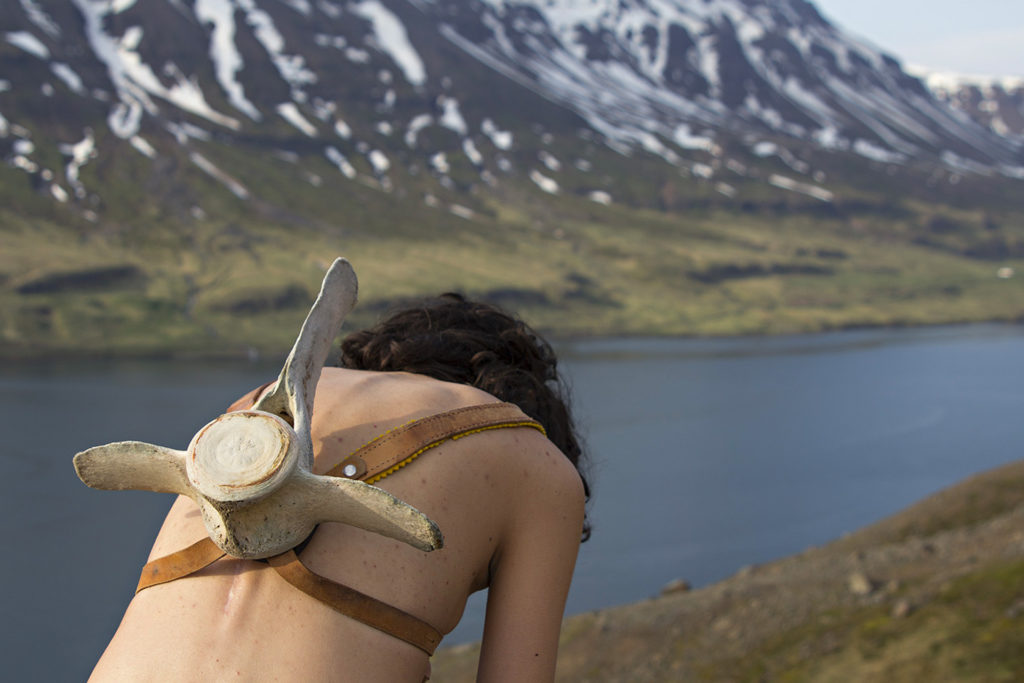
Elena Mazzi – Self-portrait with a whale backpack, 2018 – Fine art print – courtesy the artist and galleria Ex Elettrofonica
Elena Mazzi (Reggio Emilia, 1984)
Elena Mazzi studied at the University of Siena and the IUAV in Venice, after which she trained at the Royal Institute of Art (Konsthögskolan) in Stockholm.
Starting from the examination of specific territories, in her works, she reinterprets the cultural and natural heritage of places, interweaving stories, facts and fantasies handed down by local communities, in order to suggest possible resolutions to the man-nature-culture conflict. Her somewhat anthropological working method favours a holistic approach aimed at repairing the rifts that occur in society. She begins the work with observation and proceeds by combining various areas of knowledge.
Her works have been exhibited in solo and group exhibitions, including: Whitechapel Gallery in London, BOZAR in Brussels, Museo del Novecento in Florence, MAGA in Gallarate, GAMeC in Bergamo, MAMbo in Bologna, AlbumArte in Rome, Sonje Art Center in Seoul, Palazzo Ducale in Urbino, Palazzo Fortuny in Venice, the Golinelli Foundation in Bologna, the Pecci Center for Contemporary Art in Prato, 16th Quadriennale in Rome, GAM in Turin, the 14th Istanbul Biennial, the 17th BJCEM Mediterranean Biennial, Fittja Pavilion during the 14th Venice Biennale of Architecture, COP17 in Durban, the Italian Cultural Institute in New York, Brussels, Stockholm, Johannesburg and Cape Town, and the Bevilacqua La Masa Foundation in Venice.
She has participated in various residency programs in Italy and abroad. She is the winner, among others, of the 7th edition of the Italian Council sponsored by the Ministry of Cultural Heritage, the XVII Ermanno Casoli Prize, the STEP Beyond Prize, the OnBoard Prize, the VISIO Young Talent Acquisition Prize, the Eneganart Prize, the Illy scholarship for Unidee, the Pistoletto Foundation, nctm and art prize, the Sandretto Re Rebaudengo Foundation prize, the Lerici Foundation prize.
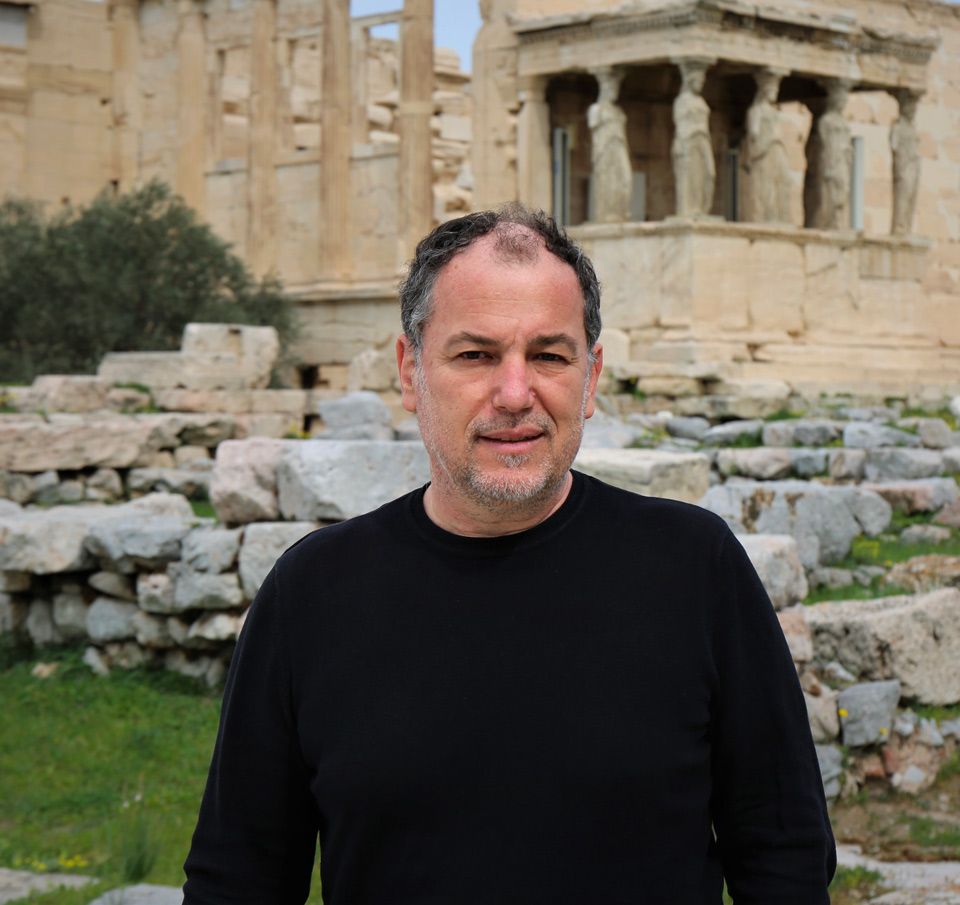
Adrian Paci
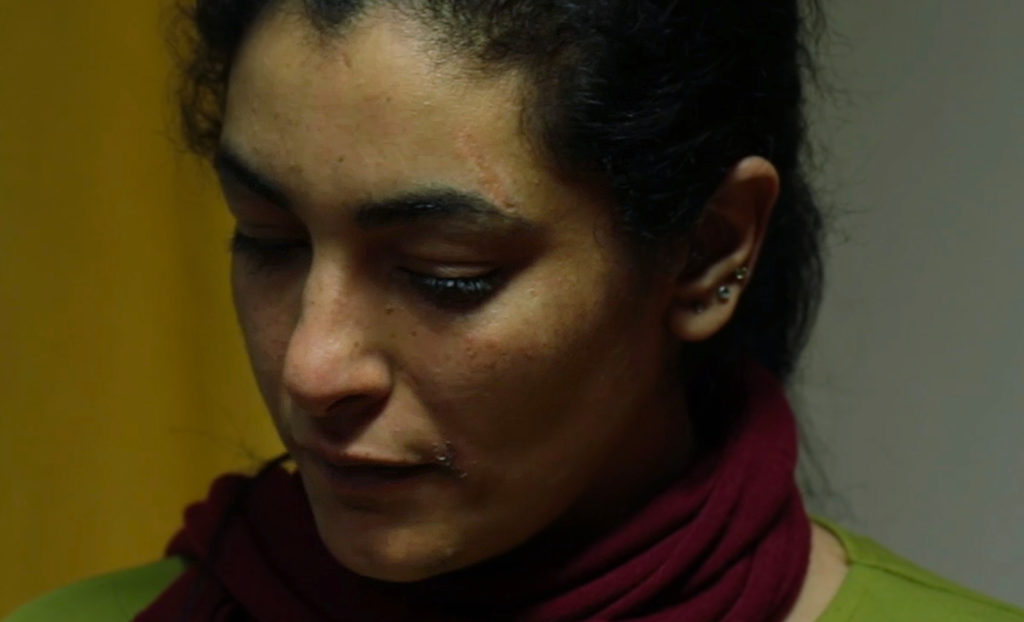
Adrian Paci – Rasha, 2017 – courtesy the artist
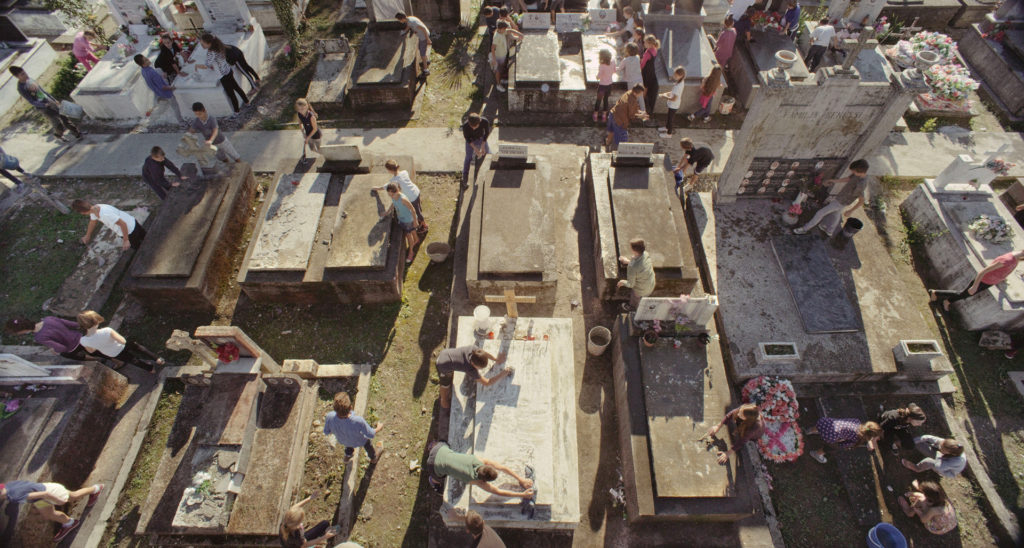
Adrian Paci – The Guardians, 2015 – courtesy the artist
Adrian Paci (born in 1969 in Shkoder, Albania)
Adrian Paci studied painting at the Academy of Art of Tirana. In 1997 he moved to Milan where he lives and works. Throughout his career he held numerous solo shows in various international institutions such as: National Gallery of Art, Tirana ( 2019), Krems Kunsthalle ( 2019), Museo Novecento, Florence ( 2017); MAC, Musée d’Art Contemporain de Montréal (2014); Padiglione d’Arte Contemporanea – PAC, Milan (2014); Jeu de Paume, Paris (2013); National Gallery of Kosovo, Prishtina (2012); Kunsthaus Zurich, Zurich (2010); Bloomberg Space, London (2010); The Center for Contemporary Art – CCA, Tel Aviv (2009); Museum am Ostwall, Dortmund (2007); MoMA PS1, New York (2006) and Contemporary Arts Museum, Houston (2005).
Amongst the various group shows, Adrian Paci’s work has also been featured in the 14th International Architecture Exhibition – La Biennale di Venezia (2014); in the 48th and the 51st edition of the International Art Exhibition – La Biennale di Venezia (respectively in 1999 and 2005); in the 15th Biennale of Sydney (2006); in the 15th Quadriennale di Roma, where he won first prize (2008); in the Biennale de Lyon (2009); and in the 4th Thessaloniki Biennale of Contemporary Art (2013).
His works are in numerous public and private collections including Metropolitan Museum, New York, Museum of Modern Art, New York, Musée d’Art Contemporain de Montréal, Centre Pompidou, Paris, Israel Museum, Jerusalem, MAXXI, Rome, Fundacio Caixa, Barcelona, Moderna Museet, Stockholm, Kunsthaus Zürich, Zurich, Switzerland, UBS Art Collection, London, Museum of Contemporary Art, Miami, New York Public Library, New York, Solomon Guggenheim Foundation, New York, Seattle Art Museum, Seattle.
Adrian Paci teaches painting and visual art at Nuova Accademia di Belle Arti NABA, Milan. He has been a teaching art classes at Accademia Carrara di Belle Arti, Bergamo, 2002-2006, IUAV, Venice 2003-2015 and has been giving lectures and workshops in many Universities, Art Academies and Institutions in different countries.
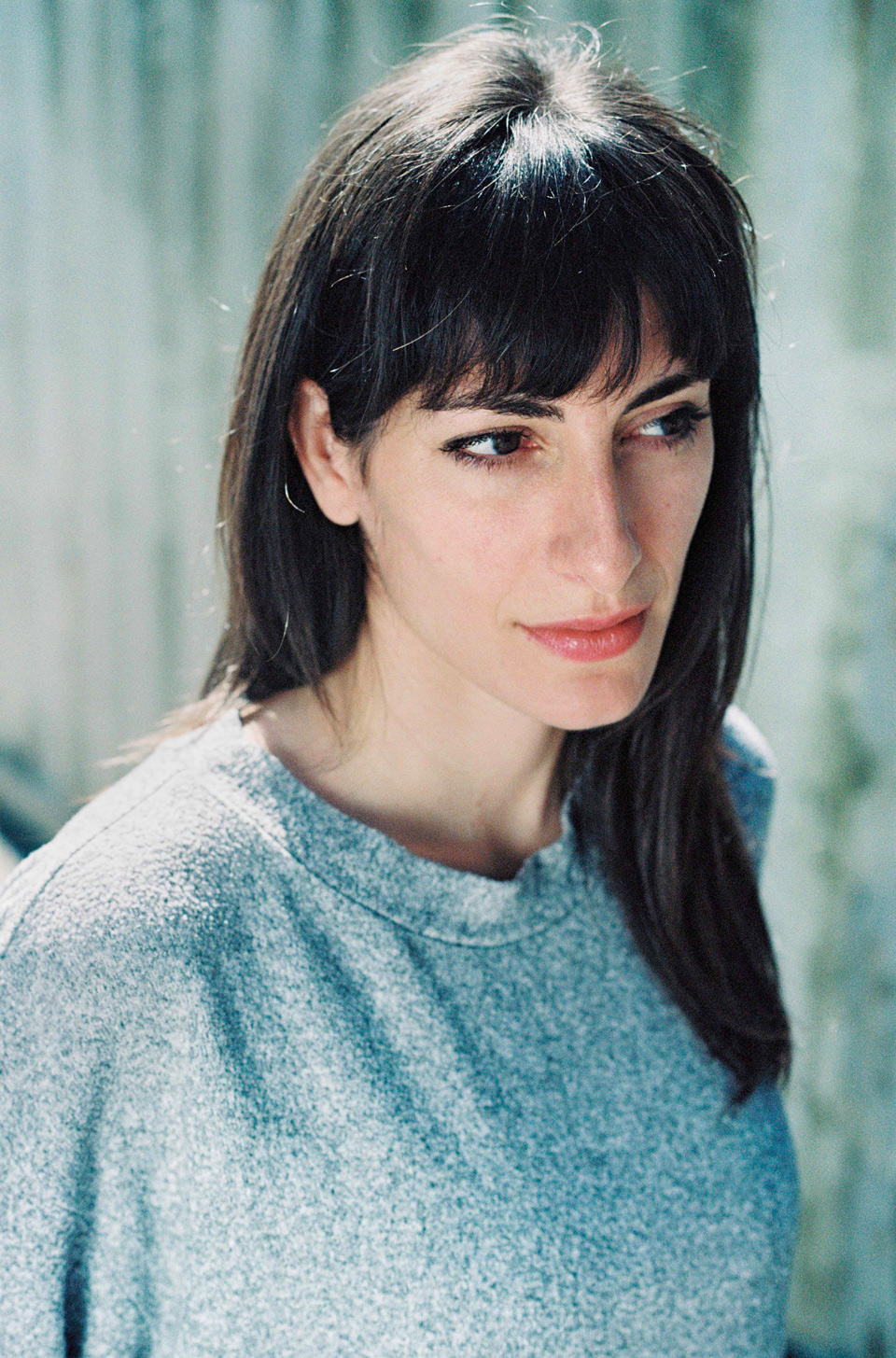
Janis Rafa – Ph. David Van Dartel
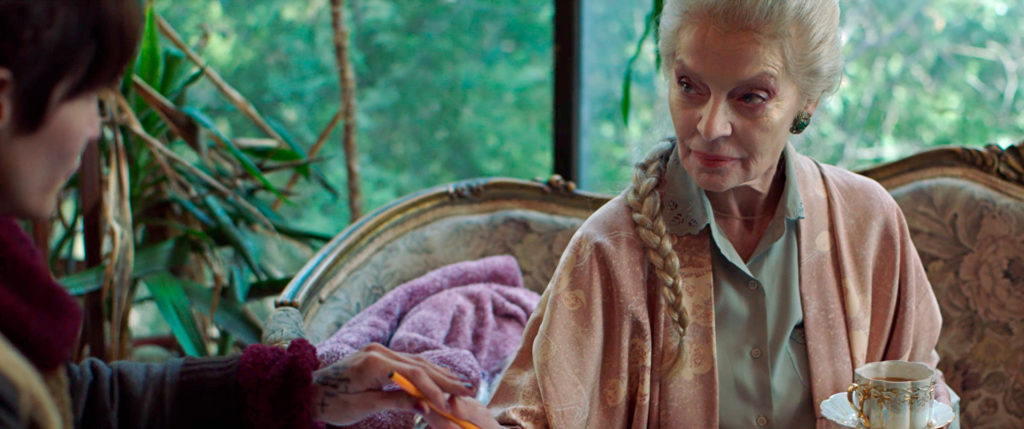
Janis Rafa – Kala azar, 2020 – courtesy Janis Rafa and SNG Film

Janis Rafa – Winter Came Early, 2015 – courtesy Janis Rafa and Martin van Zomeren gallery (*one edition of the work is part of In Between Art film collection)
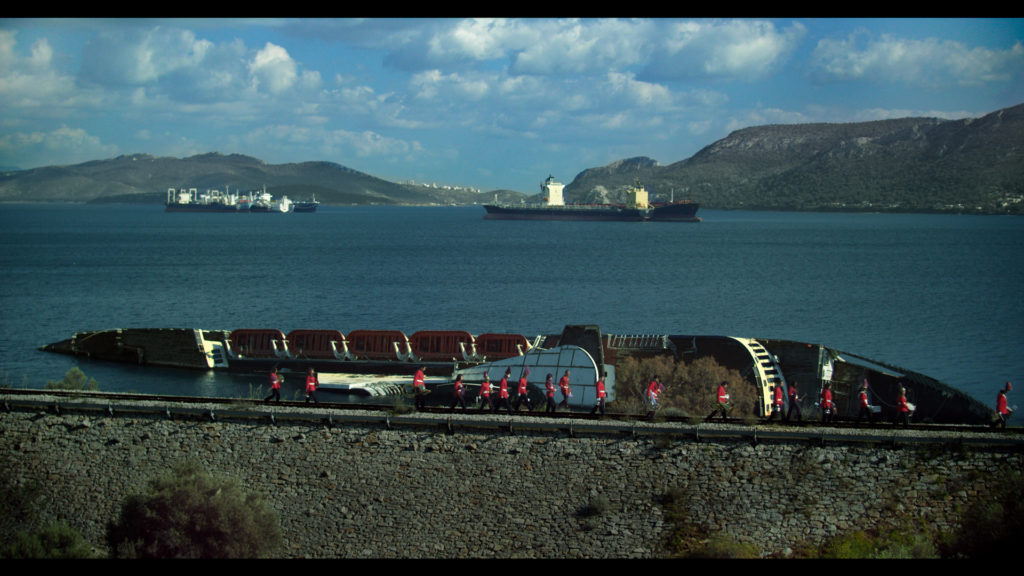
Janis Rafa – Requiem to a Shipwreck, 2014 – courtesy Janis Rafa and Martin van Zomeren
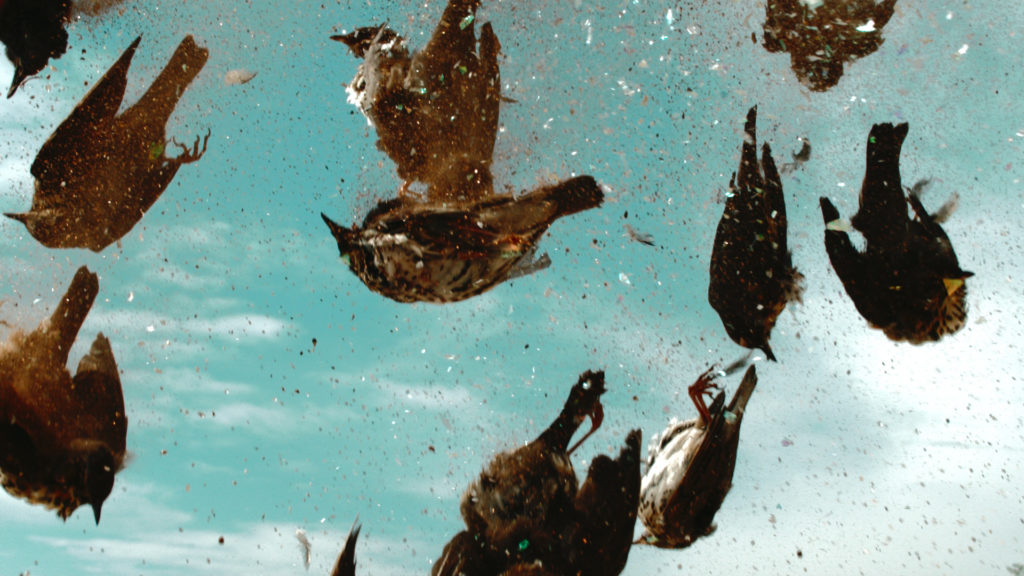
Janis Rafa – A Sign of Prosperity to the Dreamer, 2014 – courtesy Janis Rafa and Martin van Zomeren
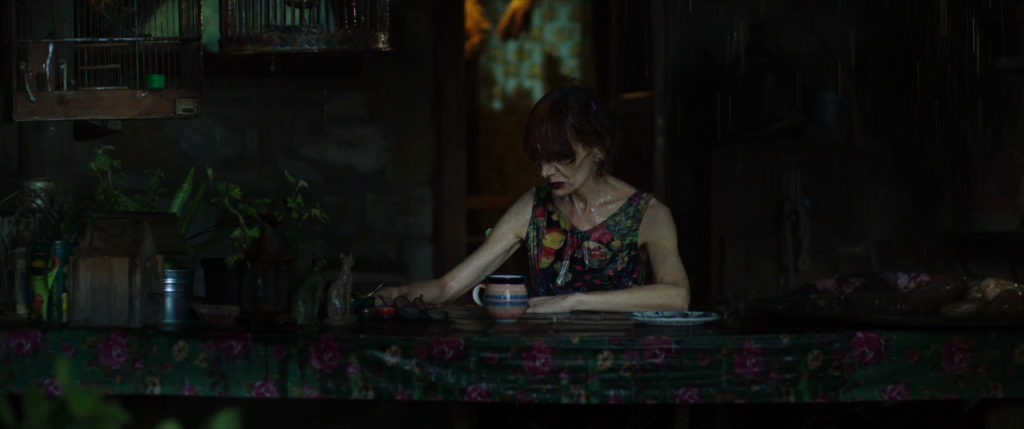
Janis Rafa – Three Farewell: The Last Burial, 2013 – courtesy Janis Rafa and Martin van Zomeren
Janis Rafa lives and works in Amsterdam and Athens.
She completed her education in Fine Art at the University of Leeds (2002-2012) with a doctorate in video art practice and was a resident at the Rijksakademie (2013-2014). In 2019 she presented her first museum solo exhibition at Centraal Museum Utrecht. She recently completed her first feature film, Kala azar (2020), which had its world premiere in the Tiger Competition at the International Film Festival Rotterdam, winning the AFK award for best Dutch (co)production. The film will premiere in the US at New Directors/New Films at MoMA & Lincoln Center (New York), and will be released in the Netherlands in August 2020.
Rafa’s work has also been shown at Palazzo Medici Riccardi (2017), Centre d’art contemporain Chanot (2017), Kunsthalle Munster (2017), Museum Voorlinden (2017), EYE Film Institute (2016), Kunstfort Vijfhuizen (2016), Palazzo Strozzi (2015), State Museum of Contemporary Art Thessaloniki (2011), and Manifesta 8 (2010), among other venues. Her moving image works have been screened at film festivals such as: IFF Rotterdam, Netherlands Film Festival, BFI London, Viennale IFF and Rencontres Internationales (2016, 2010). Her work is in the collections of the Stedelijk Museum and Centraal Museum.
CURATORS BIOGRAPHIES
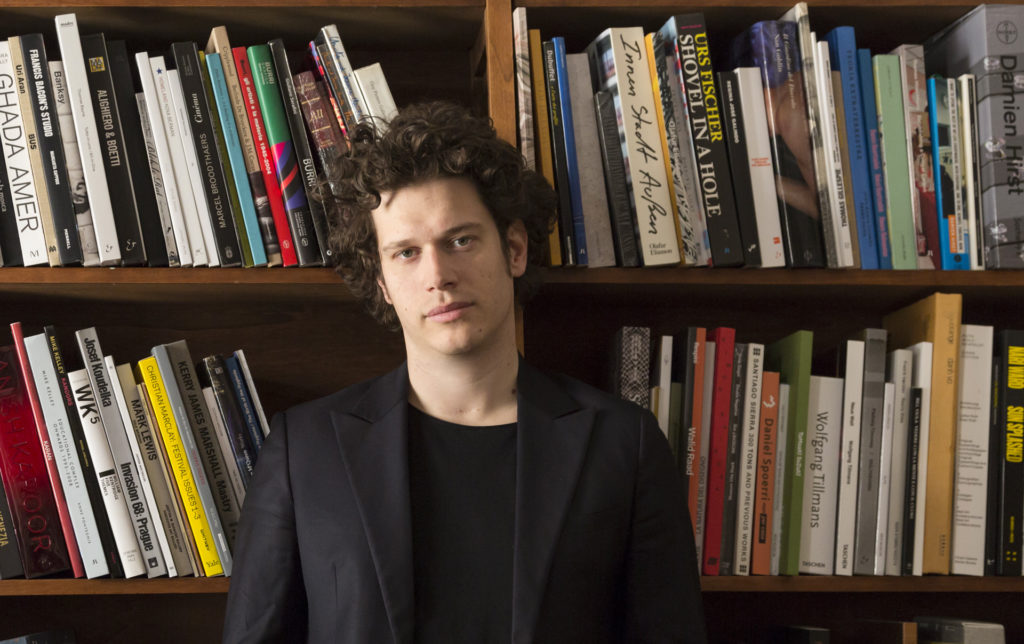
Leonardo Bigazzi – Ph. Federica Di Giovanni
Leonardo Bigazzi (Fiesole, 1982) works as a curator at Lo Schermo dell’Arte Film Festival since its first edition in 2008, where he has been responsible for special projects with the artists Hito Steyerl, Hassan Khan, Omer Fast, Hiroshi Sugimoto and Melik Ohanian. He is the co-director of Feature Expanded (2015- ) and the curator of VISIO – European Programme on Artists’ Moving Images (2012- ), to which over 150 artists have participated.
Recently curated exhibitions: VISIO Moving Images After Post-Internet (Palazzo Strozzi, Florence), Invisible Cities (MAXXI, Rome), Petrit Halilaj Shkrëpetima (Fondazione Merz, Turin; Paul Klee Zentrum, Bern; Runik, Kosovo), European Identities. New Geographies in Artists’ Film and Video (Le Murate, Florence), Directing the Real. Artists’ Films and Video in the 2010s (Palazzo Medici Riccardi, Florence; Passerelle Centre d’art contemporain, Brest).
From 2014 to 2016 he was curator at Museo Marino Marini in Florence where he curated the solo shows of Rayyane Tabet and Pablo Bronstein among other projects. In 2016 he co-curated the first edition of La Nuite blanche de Monaco.
He has been the project manager and curatorial advisor of the artist Petrit Halilaj for 12 exhibitions among which his solo-show at the New Museum in New York and his presentation at the 57. Biennale di Venezia, awarded with the Special Mention of the Jury.
He is part of the acquisition committee of the FRAC Bretagne (2020-2022). In 2017 he was part of the acquisition committee of the FRAC Champagne-Ardenne.
He holds an M.A. in Science for the Study and Conservation of Art at the University of Florence and has lectured in several Universities, Art Academies and contemporary art Institutions.
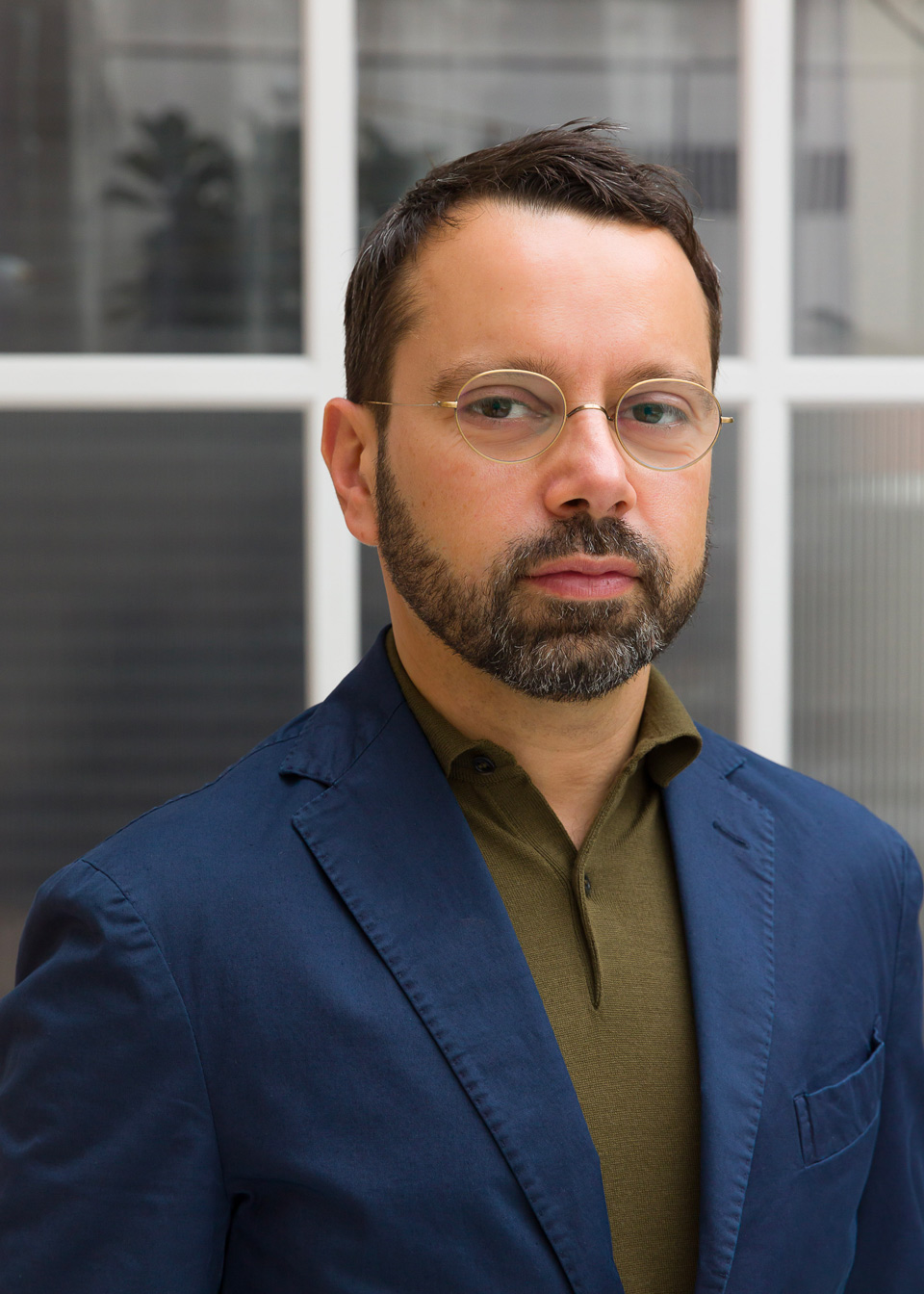
Alessandro Rambottini – Ph. Mark Blower
Alessandro Rabottini is an art critic and curator who lives and works between London and Milan. Since 2017, he is the Artistic Director of miart – International Modern and Contemporary Art Fair, Milan.
Rabottini curated many exhibitions in museums and institutions, among which, between 2014-2015 only, Robert Overby’s retrospective “Robert Overby: Works (1935-1993)” at Centre d’Art Contemporain, Geneva, which then travelled to GAMeC in Bergamo, Bergen Kunsthall in Bergen, and Le Consortium in Dijon; as well as the solo shows “John Latham: Great Noir. Works 1955-1998” and “Gianfranco Baruchello: Cold Cinema. Films, Videos and Works 1960-1999” at La Triennale, Milan. Following the latter, he co-edited Baruchello’s first comprehensive monograph dedicated to his films and videos from the Sixties onwards (Gianfranco Baruchello: Archive of Moving Images (1960-2016), Mousse Publishing). He also curated solo shows by Elad Lassry and Adrian Paci at PAC – Padiglione d’Arte Contemporanea, Milan; and Danh Vo at Villa Medici, Rome.
Previously, as Curator-at-Large at Museo MADRE in Naples, Rabottini curated the retrospectives by Walid Raad, Ettore Spalletti and Padraig Timoney. Moreover, as Curator-at-Large at GAMeC in Bergamo, he curated solo shows by International artists such as Mircea Cantor, Keren Cytter, Latifa Echakhch, Giuseppe Gabellone, Johannes Kahrs, David Maljkovic, Victor Man, Kris Martin, Pratchaya Phinthong, Pietro Roccasalva, Tim Rollins & K.O.S, Sterling Ruby, Tris Vonna-Michell, and Jordan Wolfson.
He also contributed to museum’s edited catalogues with essays about the practice of Uri Aran, Cecily Brown, Maaike Schoorel, Dana Schutz, Piotr Uklański, Paloma Varga Weisz, and Cristof Yvoré.
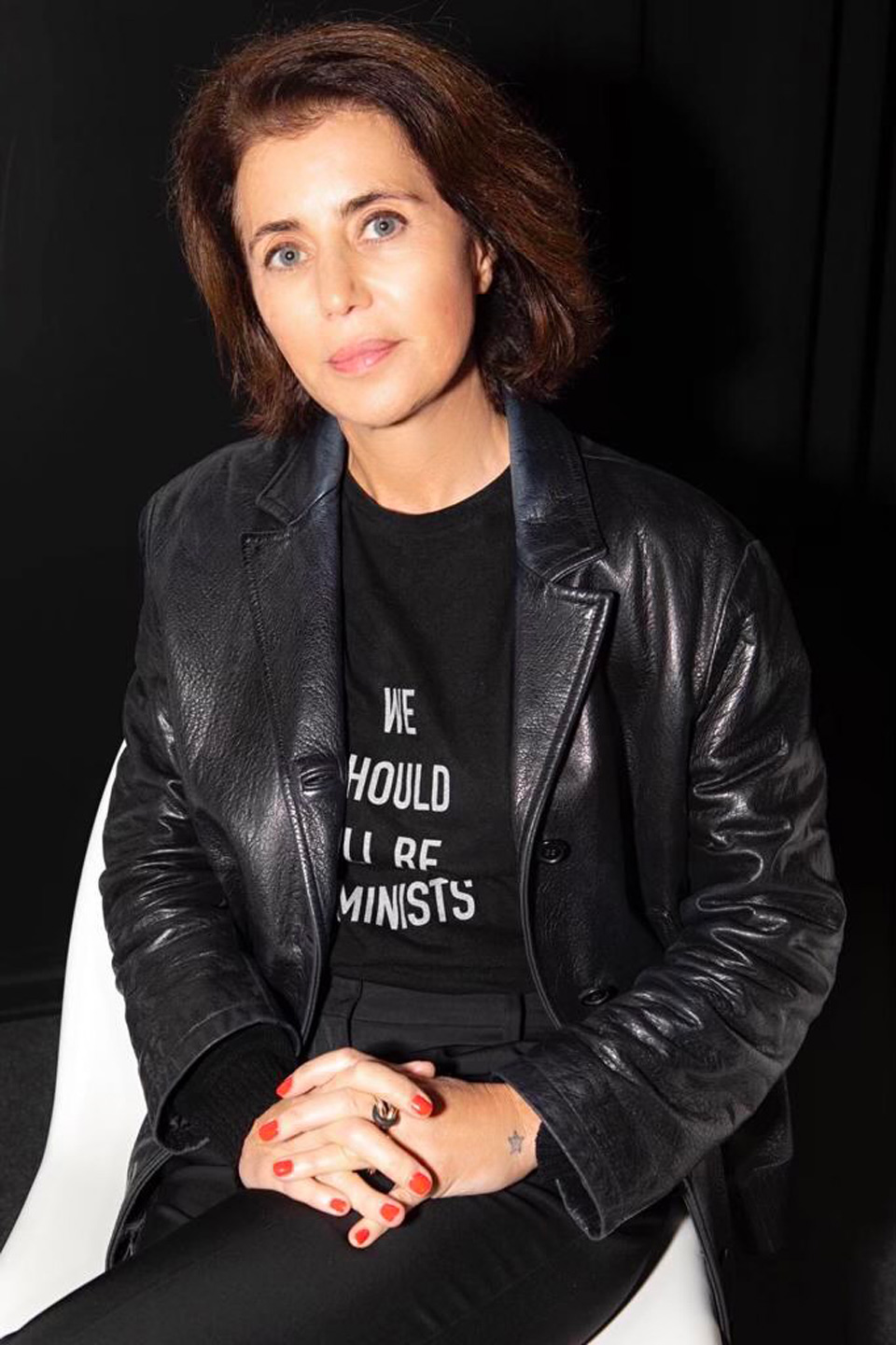
Paola Ugolini
Paola Ugolini lives and works in Rome.
She is an Art critic and independent curator. She writes regularly for Exibart. Since the late eighties she has been curating various shows and artistic projects based mostly on the work of female artists, Video-Art, Body Art, Performance Art and the relationship between Art and Feminism.
In 1990 she was assistant curator for the group show Ubi Motus Ubi Fluxus for the XLIV Venice Biennial; in 1993 assistant curator for the group show Machine for Peace in the former Jugoslavian Pavillion for the XLV Venice Biennale. In 2006 she was assistant curator for the Gino de Dominicis retrospective at the PS1 and MoMA in New York. In 2014 she curated with Cristiana Perrella the video-art group show Beyond limits and boundaries at the MAXXI Museum of Rome. Since 2015 she is guest curator at Richard Saltoun Gallery in London whith the group shows: The Body as Language, Women look at Women, Vocalizing (Greta Shödl e Tomaso Binga) and Femimism in ITalian Contemporary Art: Silvia Giambrone e Marinella Senatore. In 2017 she curated the group show Corpo a Corpo (Body to Body) at the Galleria Nazionale di Arte Moderna in Rome, which was a comparison between Italian radical feminist artists born after the mid-seventies and the female artists that have performed performance and body art action in Italy between the sixties and the seventies. Paola Ugolini is screening curator at CortoArteCircuito, since 2018 is Art Advisor at the Museo 900 in Florence. Moreover, as of 2015 she is in the scientific board of AlbumArte, an independent project space based in Rome.
